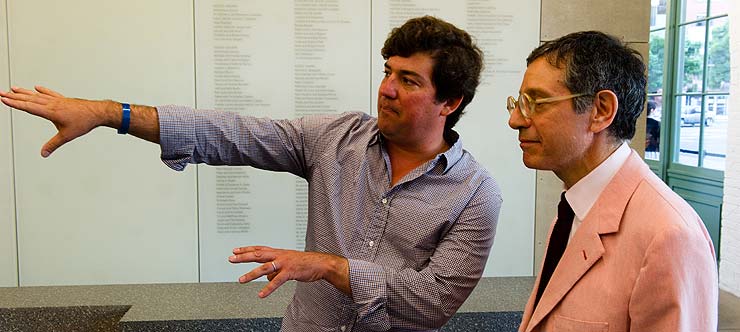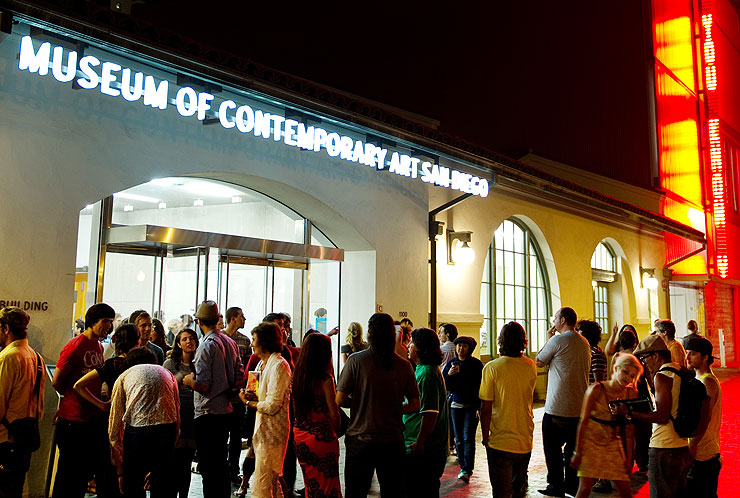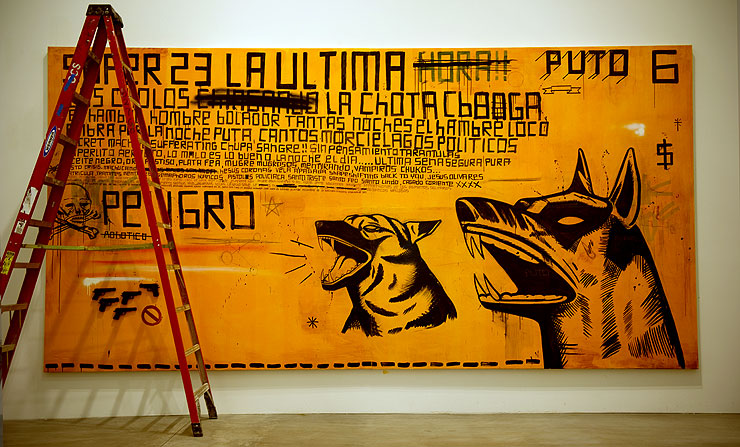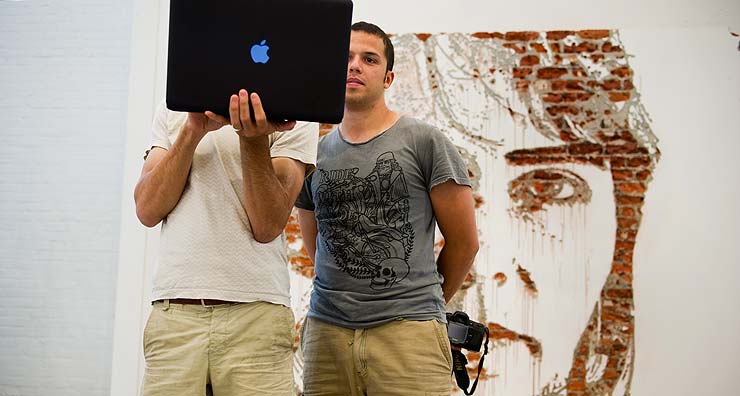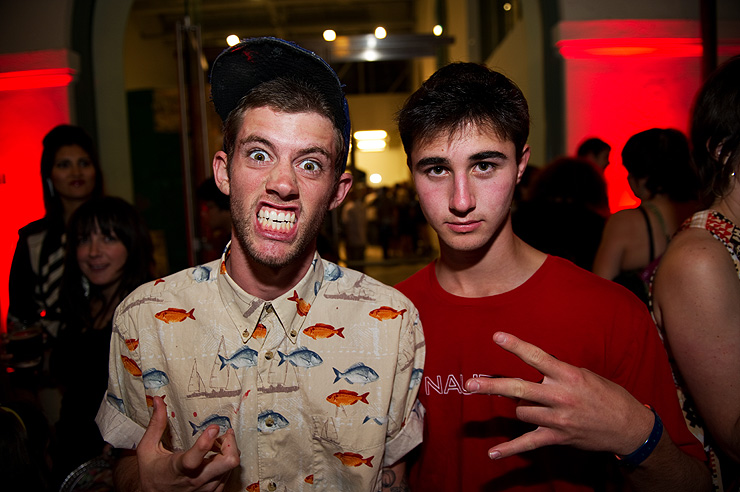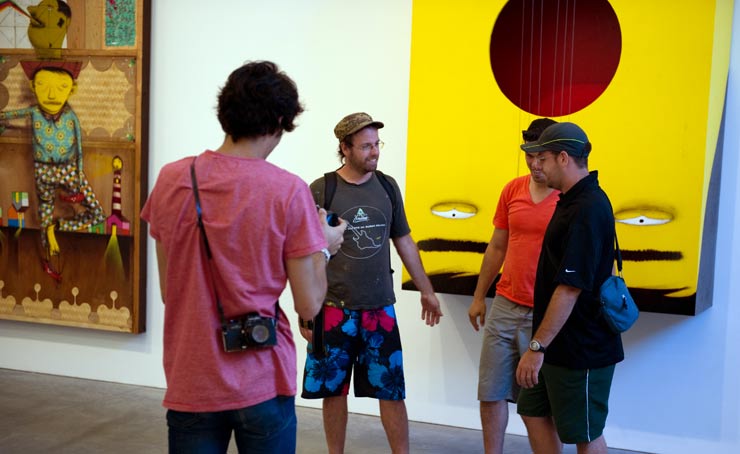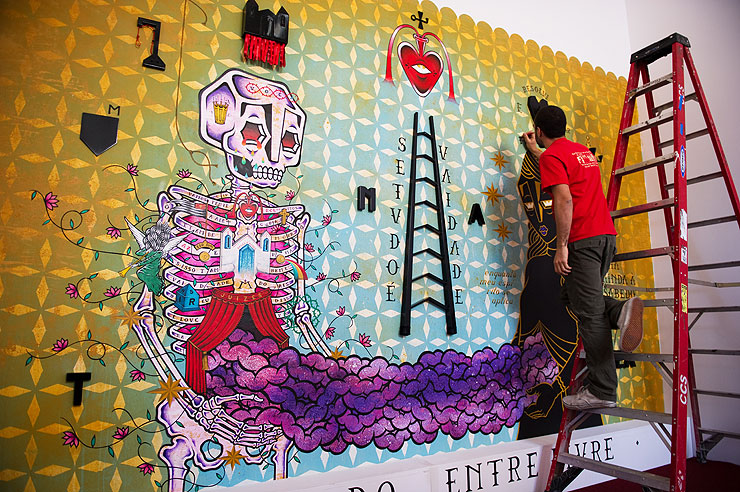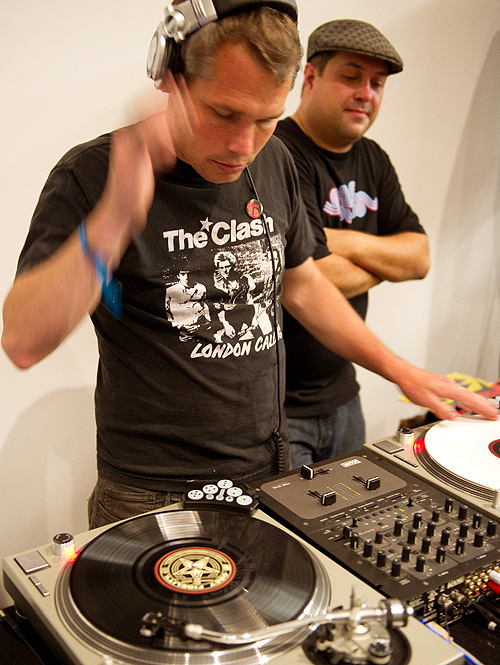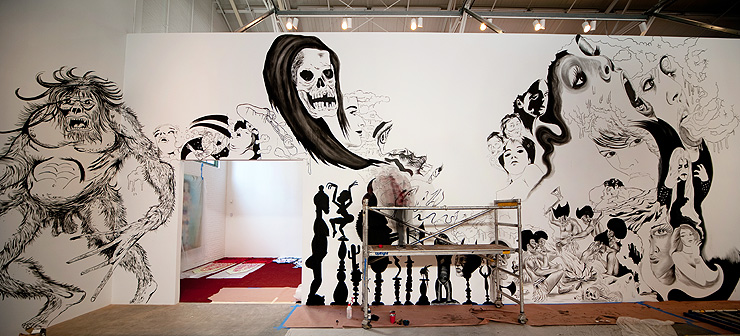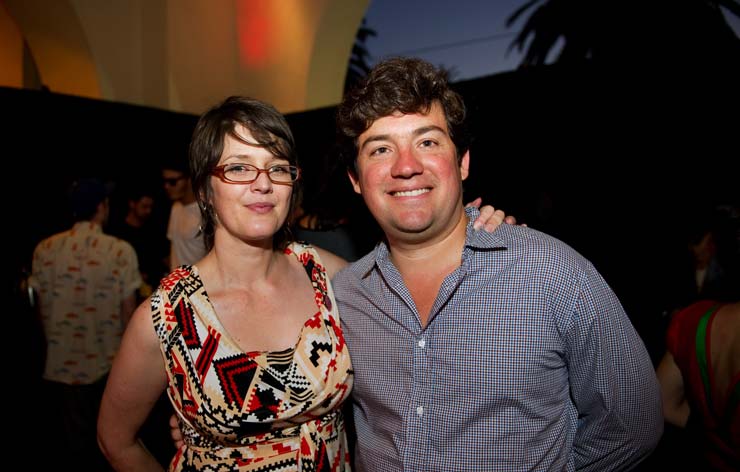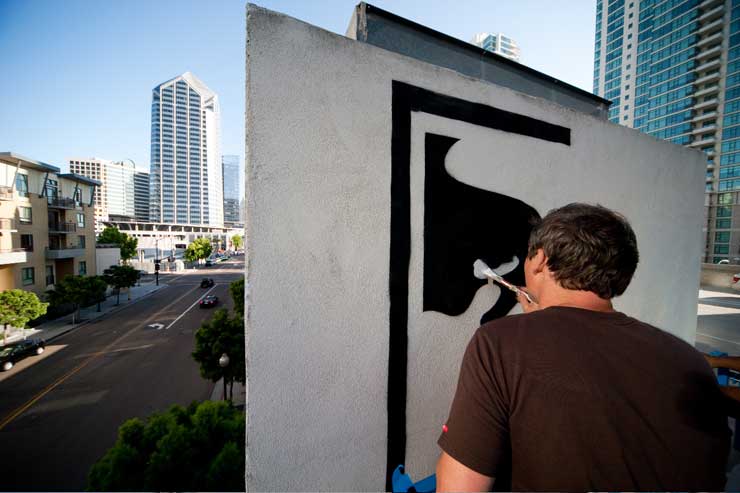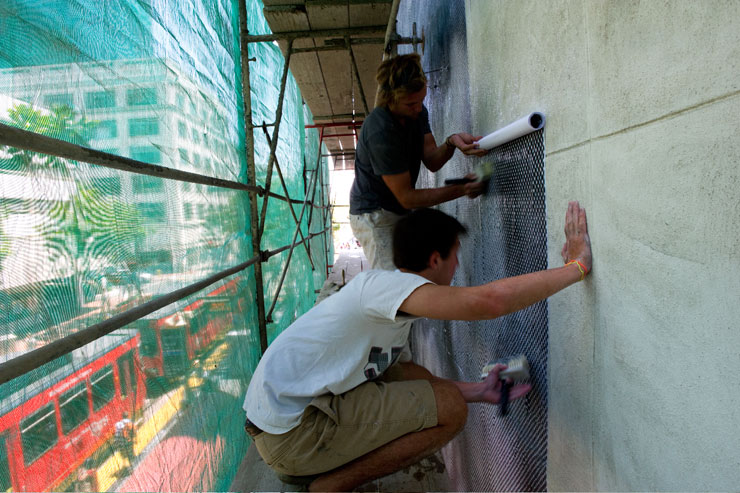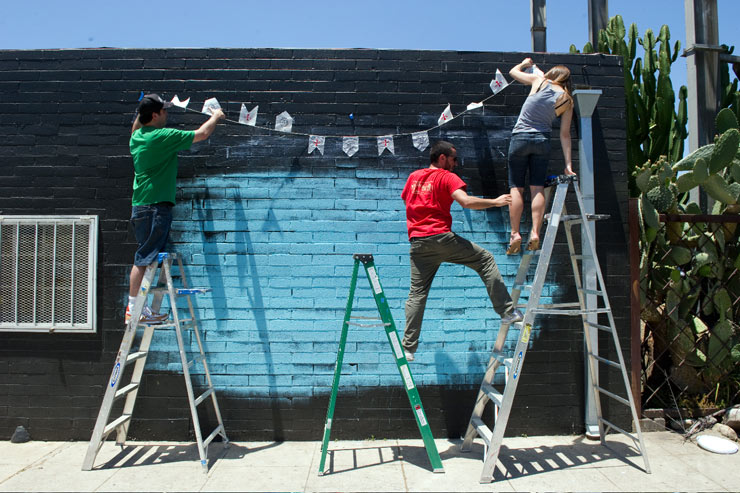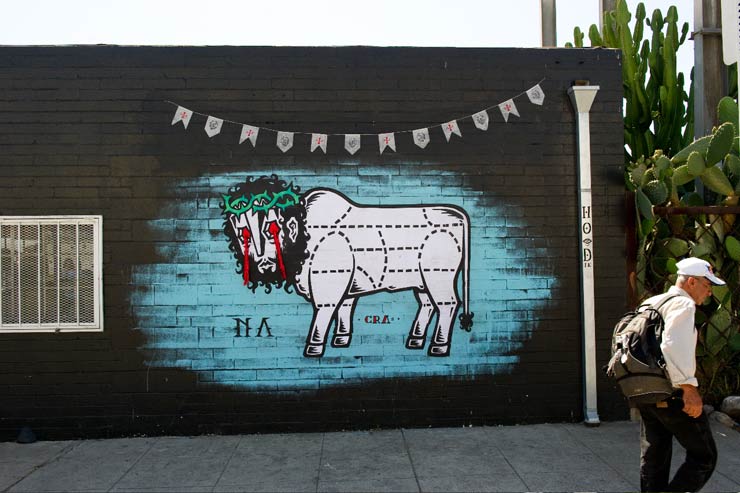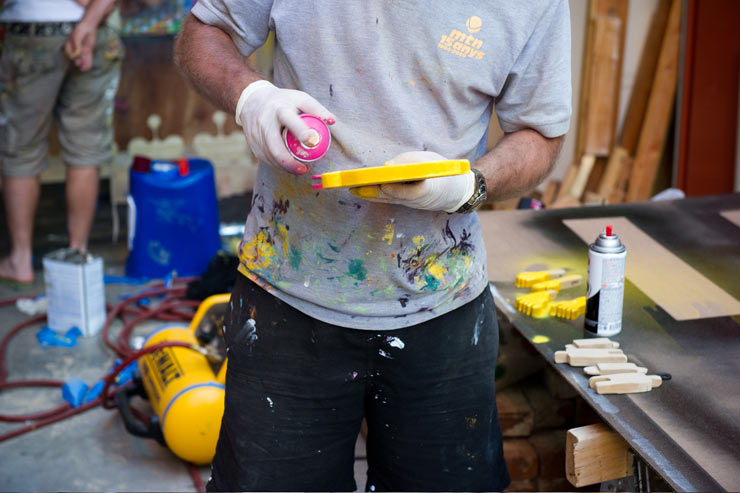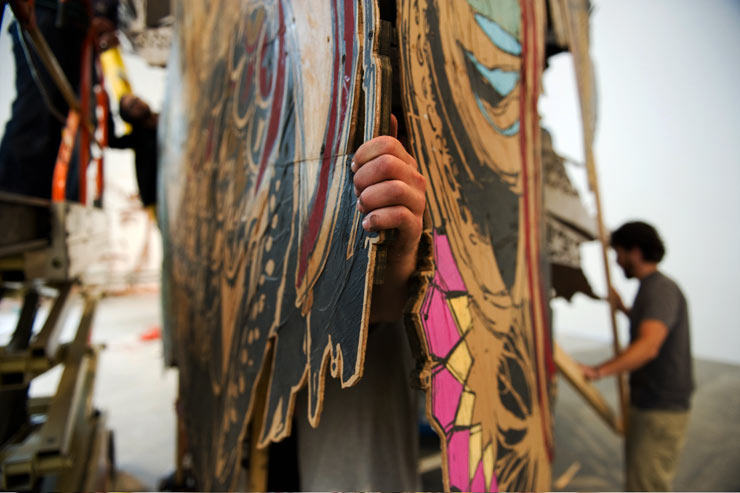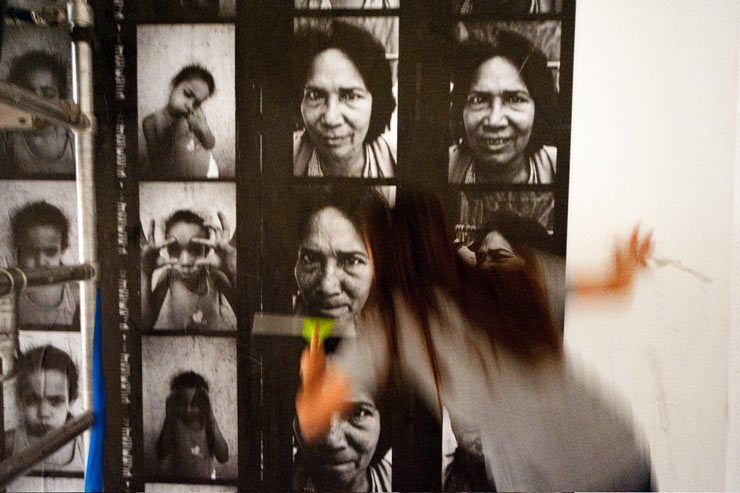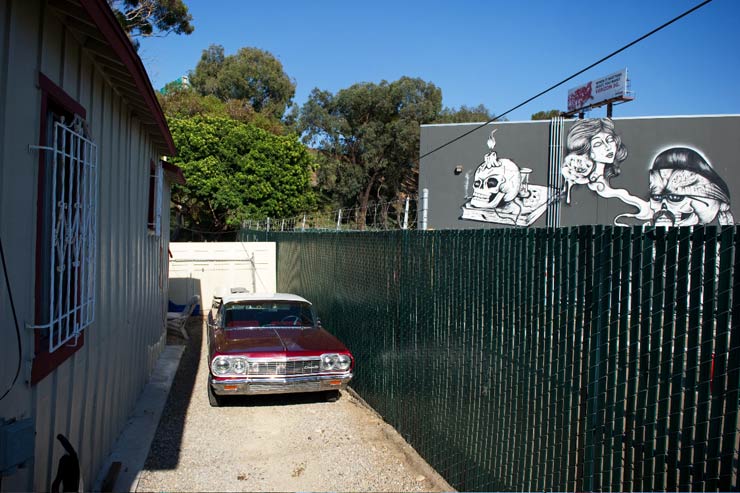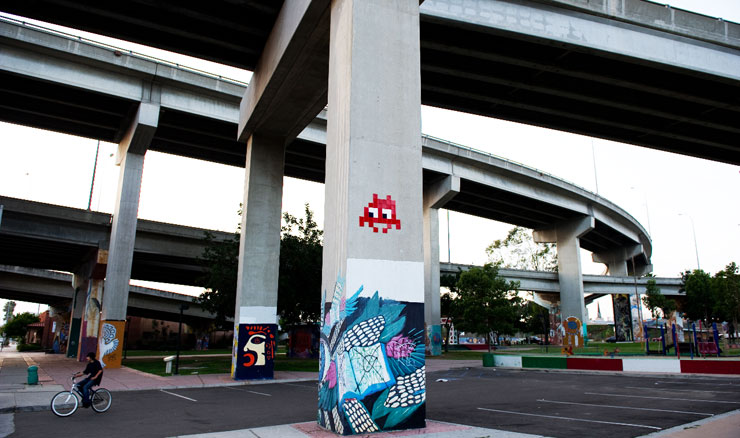Pedro Alonzo is a Boston-based independent curator and art advisor who has charted an important trajectory on the Street Art-Contemporary Art continuum as it pertains to institutions, public/private organizations and emerging and recognized artists of related genres since the 1990s. We’re very pleased today that Pedro brings BSA readers insights from a unique one month performance/exhibition space just mounted in the Boston area by the fascinating pop-social satirist Geoff Hargadon, creator of CFYW (Cash For Your Warhol).
________________________________________________________________________
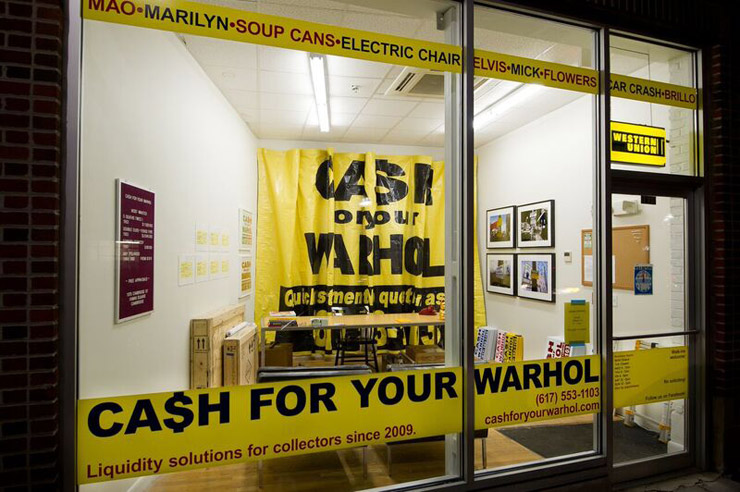
A brick and mortar staged “store” offers Cash For Your Warhol (photo © Geoff Hargadon)
_________________________________________________________________________
~by Pedro Alonzo
The artist Geoff Hargadon is responsible for the street art campaign Cash for Your Warhol (CFYW). As part of CFYW Geoff opened a pop up store for 7 weeks in Inman Square in Cambridge, MA. The store was open from Wednesday through Sunday where Geoff could be found surrounded by props and Warhol paraphernalia that created the setting for the pseudo business. Fake checks made out to local collectors and institutions adorned the walls, empty crates sat on the floor. I went to visit him on the last day of business. Throughout the interview friends, fans and strangers visited the store, interacting with Geoff. Some people brought booze, others just wanted to chat with the artist.
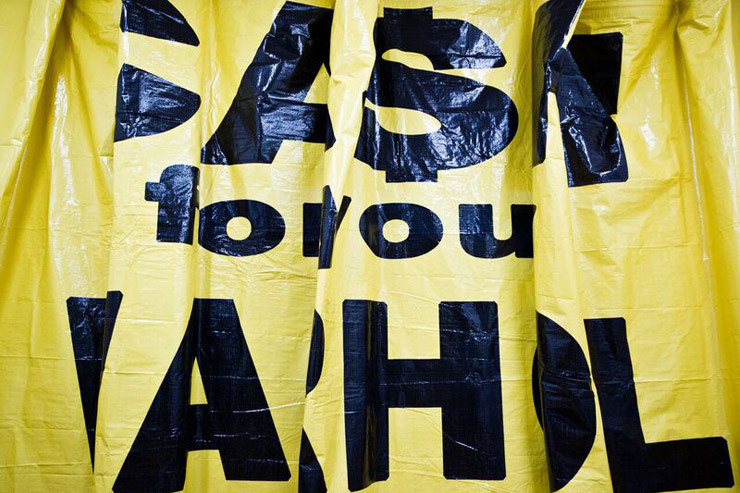
A folded vinyl billboard sign at the back of the store. Cash For Your Warhol (photo © Geoff Hargadon)
Pedro Alonzo: What led you to do the pop-up store?
Geoff Hargadon: I wanted to do a physical store that would look like a pawnshop but would only buy and sell Warhols. I went by this space and it looked perfect because you don’t have to go inside to see everything that’s going on. It’s almost like a gigantic vitrine. However, it’s better to go inside and see the details. Like the “cease and desist” order, the crates, the note that came with the flowers from David Zwirner…..
Pedro Alonzo: What? David Zwirner sent you flowers? I didn’t know he sent you flowers. How did that happen?
Geoff Hargadon: No, I just sent myself flowers and had the note signed from David Zwirner.
Pedro Alonzo: Do people see that?
Geoff Hargadon: Very few, but I’m okay with that. I don’t think there’s a single person who’s seen everything that’s going on in the store. Which is okay. Most people come in and they want to know if the checks are real or ask, “Can I have a sign?” “How much are the signs?”
Pedro Alonzo: Are you selling anything?
Geoff Hargadon: That wasn’t the original intent but people have come in and bought a couple signs.
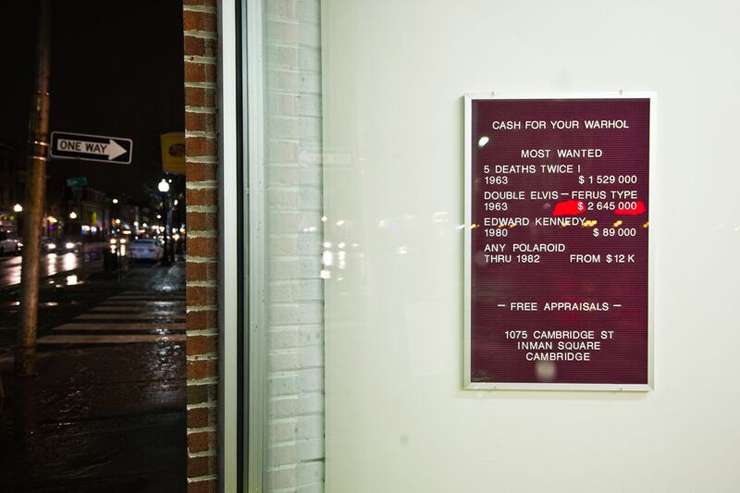
A posted sign in the window describes the hottest pieces sought by Cash For Your Warhol (photo © Geoff Hargadon)
Pedro Alonzo: What about the Shwag?
Geoff Hargadon: The reason schwag makes sense is that if we are pretending to be a real company, we have to have schwag to give away. It makes fun of the industry that makes things for companies that are trying to promote their product. That amuses me. I have a lot of stickers from the Cash for your Warhol campaign, pencils, and stress balls.
Pedro Alonzo: How do you get started with Cash for Your Warhol?
Geoff Hargadon: It started with signs in early 2009, during the peak of the financial crisis. I noticed that signs kept popping up “cash for your house”, “cash for your this and that” it made me think, this crisis is affecting everyone, so where are the signs for the 1%? Actually, that is probably not what I said because that was before the term 1% was used. The phrase, “Cash for your Warhol” popped into my head, it sounded funny.
I decided to make signs and put them up to see what would happen. However, I did it in a rush and I put my cell phone number on the first 100 signs. That was a mistake because even though I thought everyone would be in on the joke, that wasn’t the case. People were calling at all hours. I solved that problem by getting a Google voice number.
Pedro Alonzo: How many calls do you get on average?
Geoff Hargadon: I get a call every day but most of them hang up. I think the reason for that is that people want to know if this is real. When they hear the voice on the answering machine they hang up. Some people leave messages, a few people actually call because they have Warhol’s to sell.
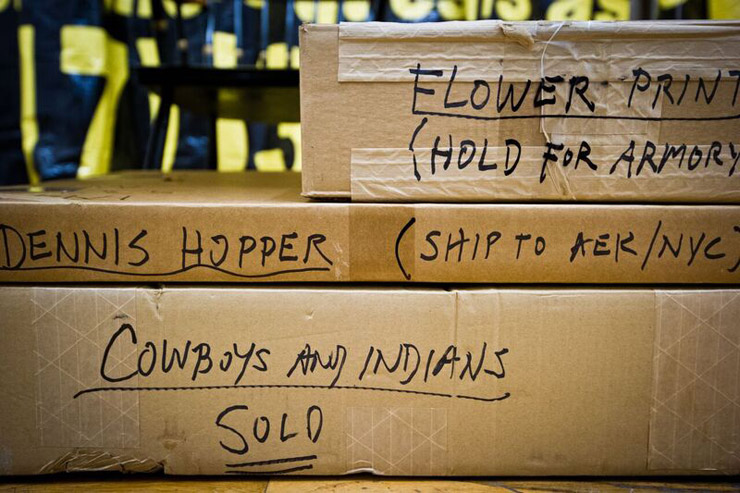
Artworks for shipping and receiving at the Cash For Your Warhol storefront. (photo © Geoff Hargadon)
Pedro Alonzo: Have you had legitimate offers?
Geoff Hargadon: I’ve been shown about 30 Warhols. It’s all done through the Internet, I have not met anyone in person. People send pictures, certificates of authenticity, proof of purchase, close-ups of the signature, etc. Some of the Warhol’s have been the real deal. I was shown a painting that was estimated at around $6 million. It seems kind of silly that someone would show me a $6 million Warhol. I’ve also been shown stuff that Andy Warhol supposedly autographed; programs, pictures, a napkin, a dress. The problem is that people who have Warhol’s seem to think that because it’s a Warhol it is worth 1 million bucks. I get a lot of bogus offers from people who are fishing around – which I’m okay with.
Pedro Alonzo: Is your intention to start a dialogue?
Geoff Hargadon: It’s a commentary on the art world that sees art as commodity. It’s part street art, it’s part performance art. Being here is kind of a performance. I’m performing as if this were a real store.
At that moment a group of young women walk by and read out loud, “Cash for you Warhol. This is supposed to be an art project or something.”
Geoff Hargadon: This project is a parody of the enterprises that are financial predators. They prey on people who get into difficult situations and are forced to sell their house to somebody who put a phone number on a telephone pole. This seems kind of crazy but people must do it or we wouldn’t see so many signs.
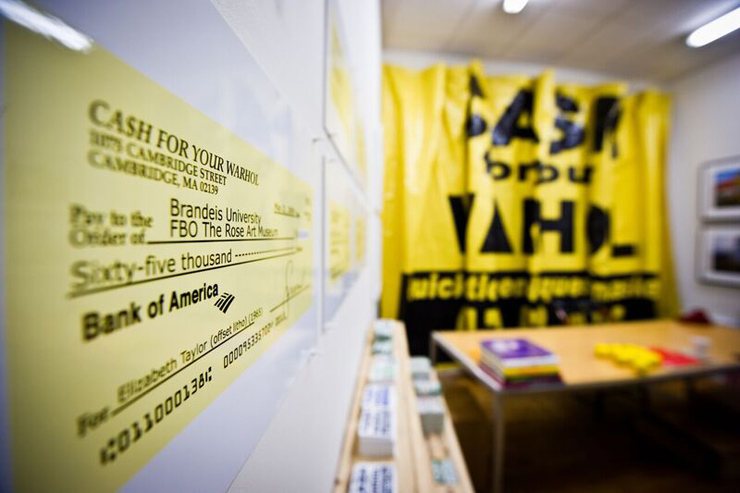
Examples of huge payouts are posted for your perusal at the Cash For Your Warhol business. (photo © Geoff Hargadon)
Pedro Alonzo: Are there any influences?
Geoff Hargadon: A big influence was Banksy’s pet shop in New York. That was pretty epic. As well as Faile’s arcade, which I saw in Miami and in the lower East side. They are good examples. In many cases, pop-ups are about selling prints. Faile and Banksy’s pop ups were really about a concept.
Pedro Alonzo: You’re spending a lot of time here. What has been the pleasure of doing this?
Geoff Hargadon: The pleasure has come from a number of different sources. Friends and artists have been dropping by. Several artists have come to trade art works. Which is really great, I love to trade. I’ve also had a couple of people come in who want to wire money through Western Union. That was a little awkward because we have a Western Union sign but we are not set up to send wires.
I have also enjoyed the quiet of the store. Sitting in here reading, catching up on emails. Minding my own business, when out of the corner of my eye I see somebody walk by, pause and look completely confused. They will look at the store for a few seconds and then keep on walking. To me that really indicates the success of the design of the store. Because it looks real enough to possibly be a store were people might buy your Warhol. I like the fact that most people walk by and think it’s just a pawnshop and are not interested in coming in. Many people come in and say, “I’ve been following your project for years, this is so great, nice to see you.” Then they take some stickers and hang around. It’s kind of a lovefest. I have really enjoyed it.
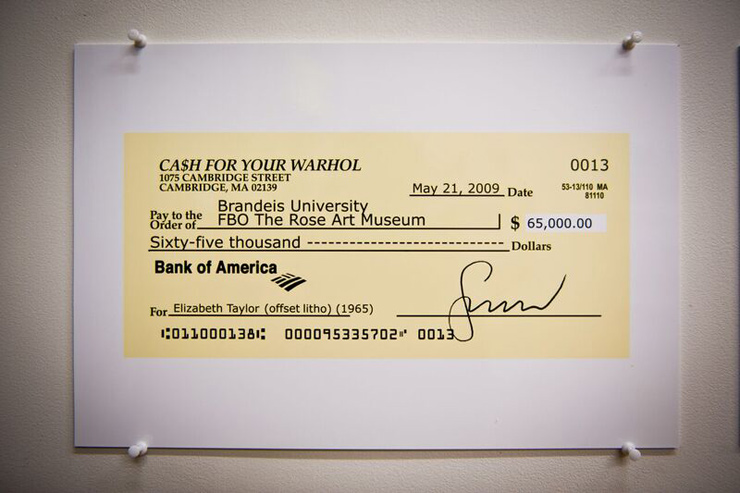
Cash For Your Warhol (photo © Geoff Hargadon)
Ben: Sorry to interrupt. I have been a big fan of this.
Hargadon: Thanks. I’m Geoff.
Ben: I’m Ben. I have an Andy Warhol story to tell you. I was an usher at Radio City Music Hall in the 80’s. During the intermission of a Johnny Mathis concert I was sent to stand in front of the orchestra with my back to the stage facing the audience. 10 rows up on the isle was Andy Warhol slumped down in his chair with his hair sticking up. I noticed he was looking at me and we basically started playing peekaboo. Andy Warhol who would hide behind his program. That was so cool. I think what you’re doing is nuts and kind of funny and I’ve even bought some your signs.
Hargadon: Really? That is awesome.
Ben: Yeah, I’m one of those guys that buys your signs.
Hargadon: Do you want to take a sign?
Ben: My wife won’t let me put it up but I will take it.
Pedro Alonzo: Why did you pick this location?
Geoff Hargadon: I live about a mile down the road but I haven’t really explored Inman Square. It’s an interesting collection of people, that’s what makes Cambridge and Somerville so great. It is important that the pop up take place outside of an arts district. This needs to be a destination. It would not work if it had been next to a Gallery. It has to be ambiguous.
Geoff Hargadon: Did you hear that? That guys was explaining to his girlfriend that this is an art installation. I love that.
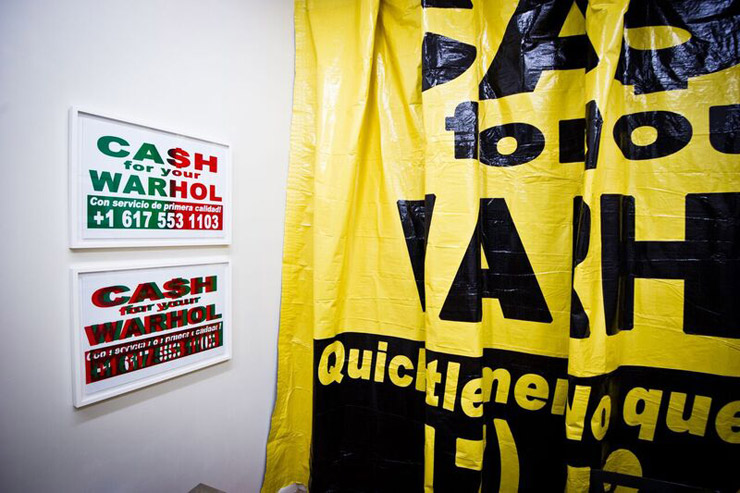
Cash For Your Warhol (photo © Geoff Hargadon)
Hargadon: Hey Man. How’s it going?
Keith: I brought a celebratory beverage, a final day thing.
Geoff Hargadon: Jesus! Wow, champagne.
Keith: You want to throw some down?
Geoff Hargadon: I tried to convince Pedro to have some beer earlier but champagne is actually better.
Keith was followed by a rush of more friends, fans and admirers. Some of whom brought beer and wine turning the Cash for Warhol store into an impromptu party. Once the booze was finished everyone went home and we continued the interview.
Pedro Alonzo: Watching today unfold with all of these people coming to see you and experience your store makes me think how insipid just looking at art inside a white box can be.
Geoff Hargadon: A museum has many advantages over the store but the advantage here is that people can engage with the store in many different ways. Like the guy who was just here, he’s not going to go to a museum with a bottle of wine. Even the people who came in to wire money, they weren’t pushed away. I tried to be as accommodating as possible even though I couldn’t send their wire.
Pedro Alonzo: It seems that your intention was to encourage gathering, socializing, and an exchange of ideas around your art.
Geoff Hargadon: It is an art project that poses as a business but actually has no commercial intent – which is kind of weird when you think of it. I’m not really here to sell stuff and I like that ambiguity about it. I opened this temporary store and whatever happens, happens. This project is subversive to the art establishment in that it raises the issue of art as commodity. Museums are some of my favorite places in the world, and they play a very valuable role. But I also feel that Street Art plays a very valuable role by working outside of the world.
Pedro Alonzo: What does your wife think about all of this?
Geoff Hargadon: She likes it but she will be happy when it’s over.
Pedro Alonzo: My wife just texted me. I gotta get home to dinner.
Geoff Hargadon: Yeah, me too.

Cash For Your Warhol (photo © Geoff Hargadon)
___________________________
Pedro Alonzo is an independent curator whose unique understanding and appreciation for the Street Art scene has made him a strong and trusted advocate for artists such as Os Gêmeos, Shepard Fairey, Dr. Lakra, Faile, MOMO, and Swoon, among many others. His curatorial vision has brought new audiences a greater appreciation for these artists in solo and group shows at places like ICA/Boston, Dallas Contemporary, Pinchuk Arte Centre in Kiev, and the Museum of Contemporary Art San Diego. Most recently he curated a citywide exhibition titled Open Source: Engaging Audiences in Public Space for the Philadelphia Mural Arts Program.
BSA<<>>BSA<<>>BSA<<>>BSA<<>>BSA<<>>BSA<<>>
Please note: All content including images and text are © BrooklynStreetArt.com, unless otherwise noted. We like sharing BSA content for non-commercial purposes as long as you credit the photographer(s) and BSA, include a link to the original article URL and do not remove the photographer’s name from the .jpg file. Otherwise, please refrain from re-posting. Thanks!
BSA<<>>BSA<<>>BSA<<>>BSA<<>>BSA<<>>BSA<<>>
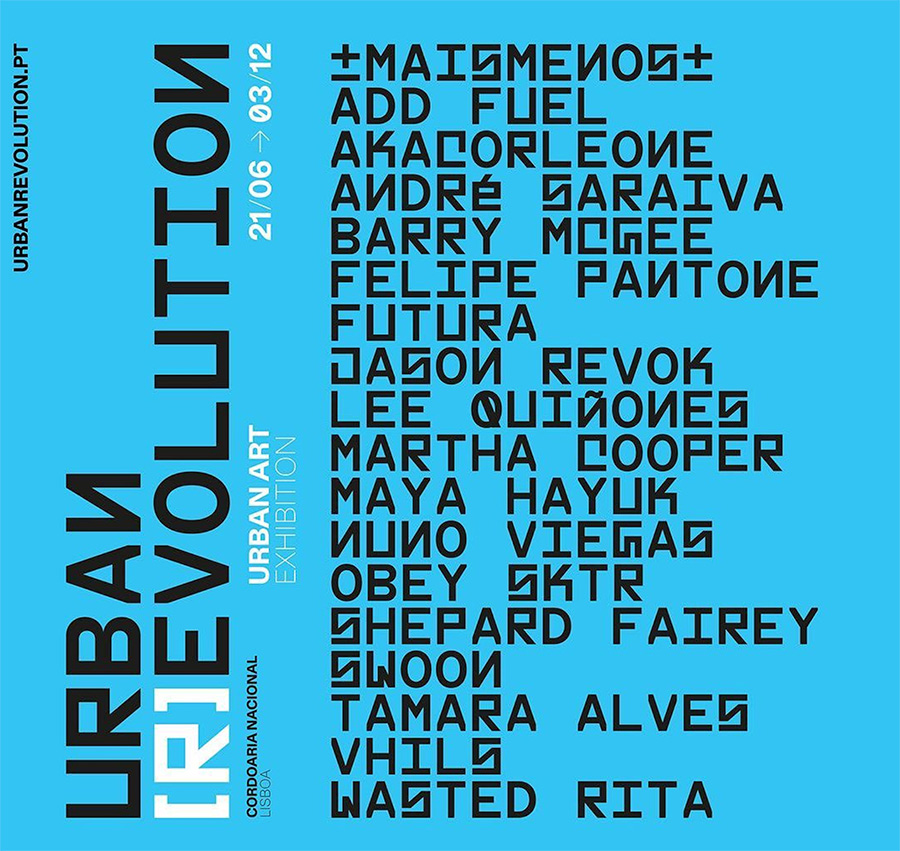
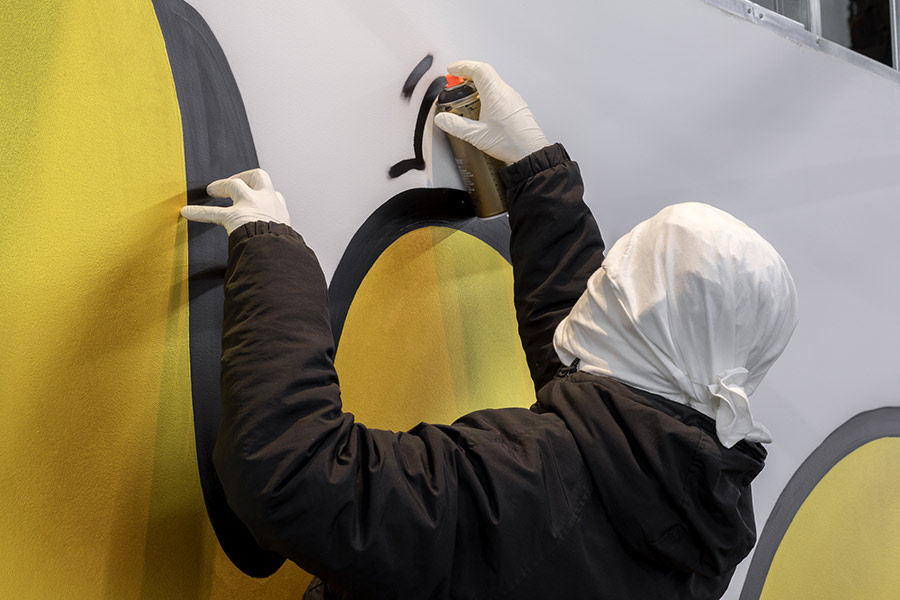
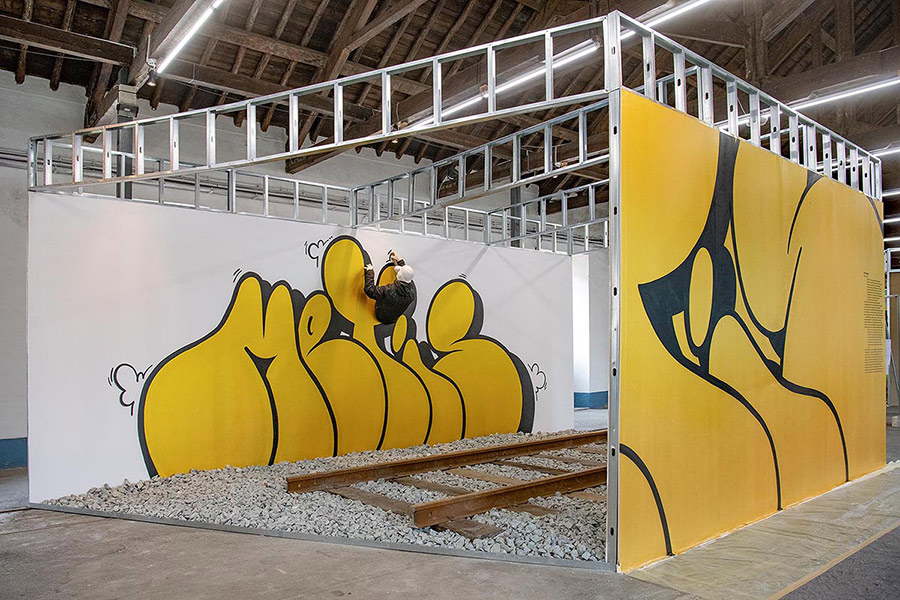
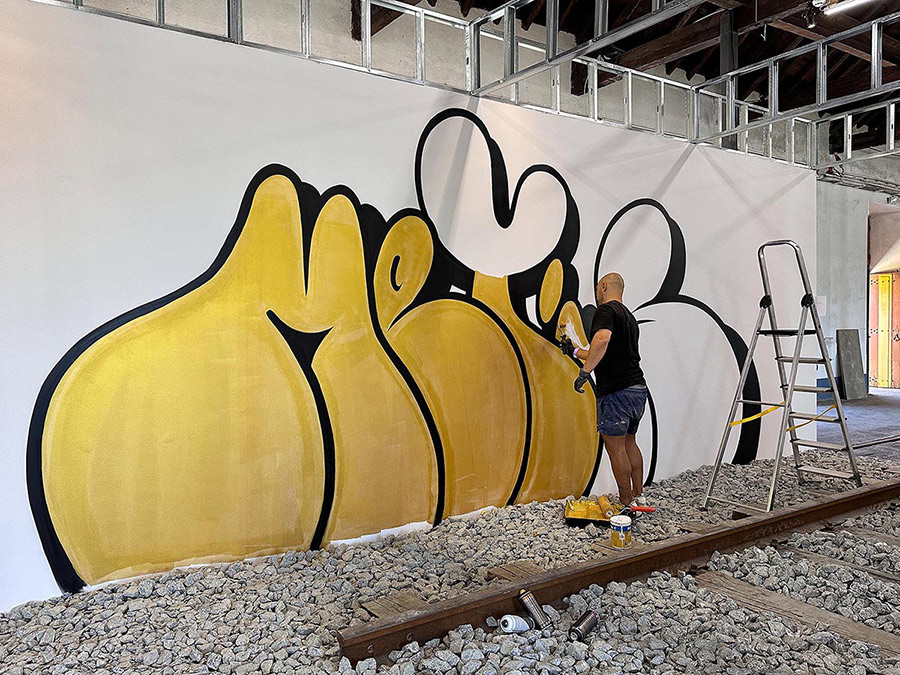
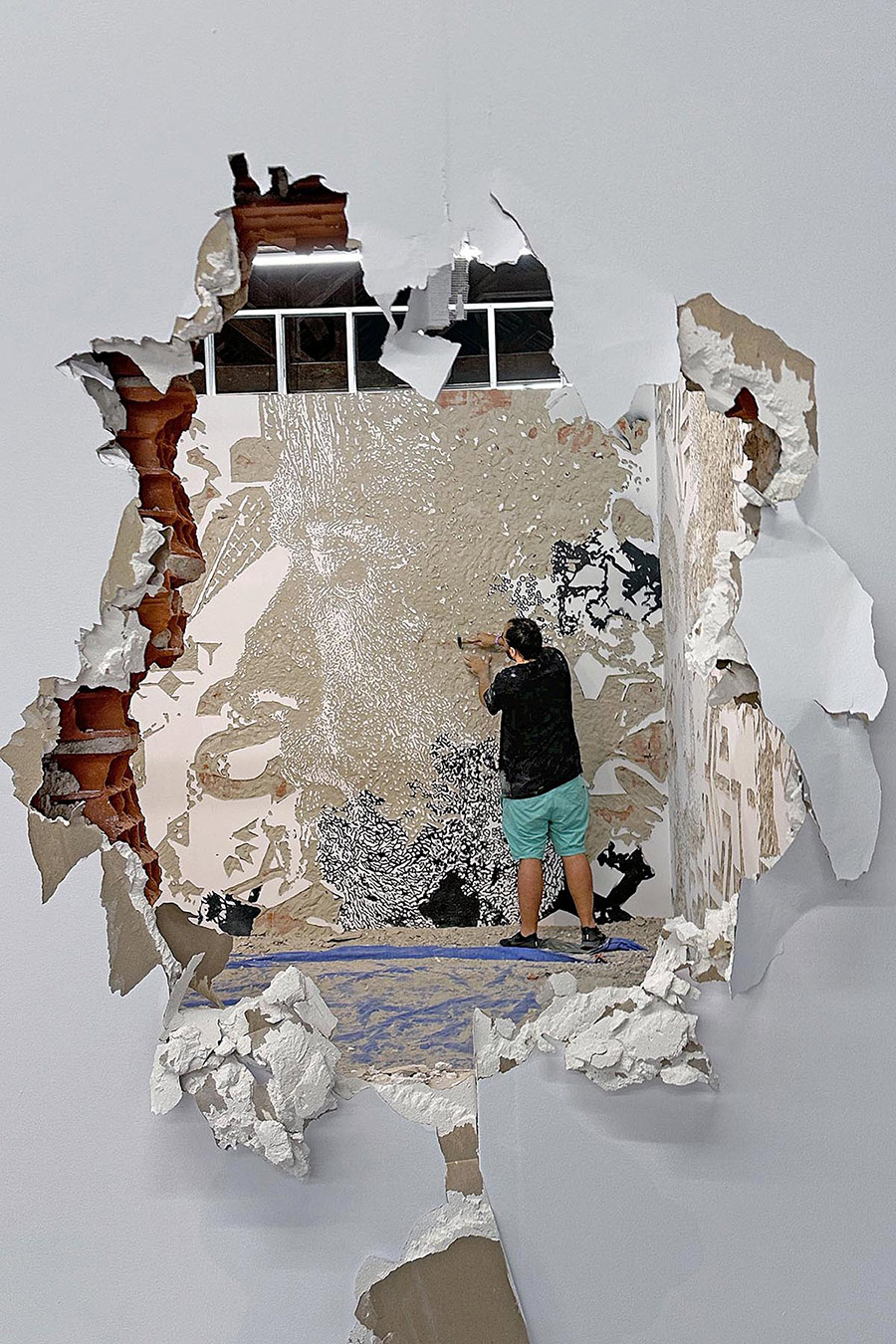
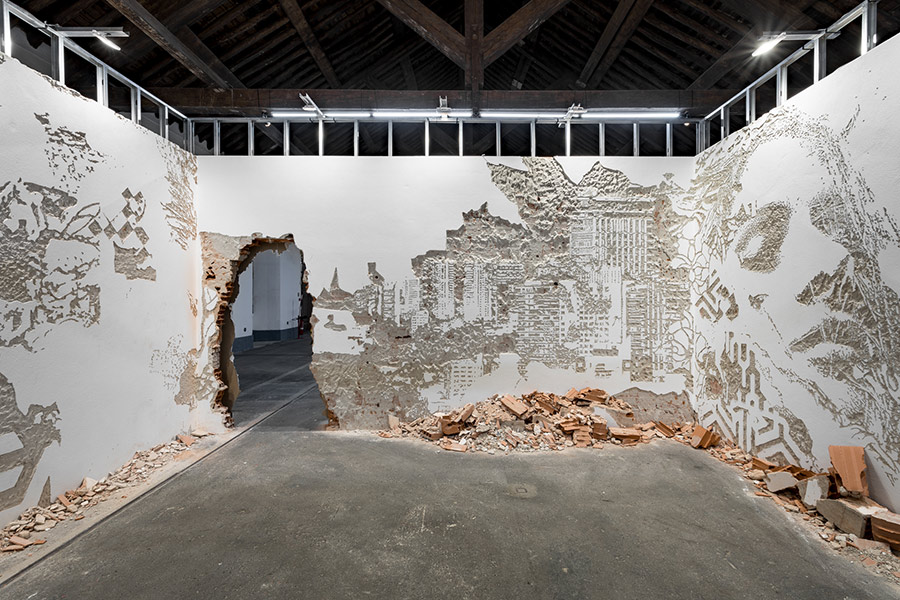
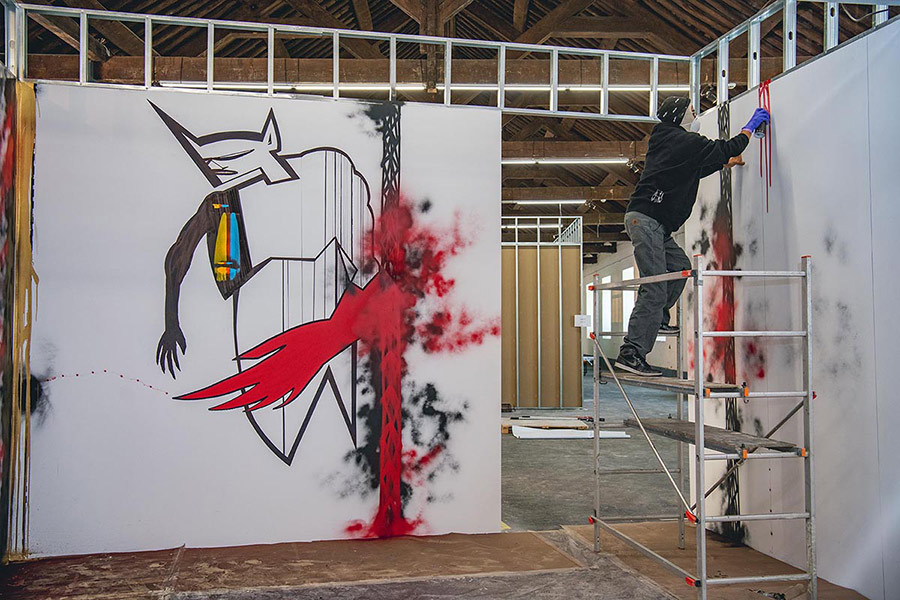
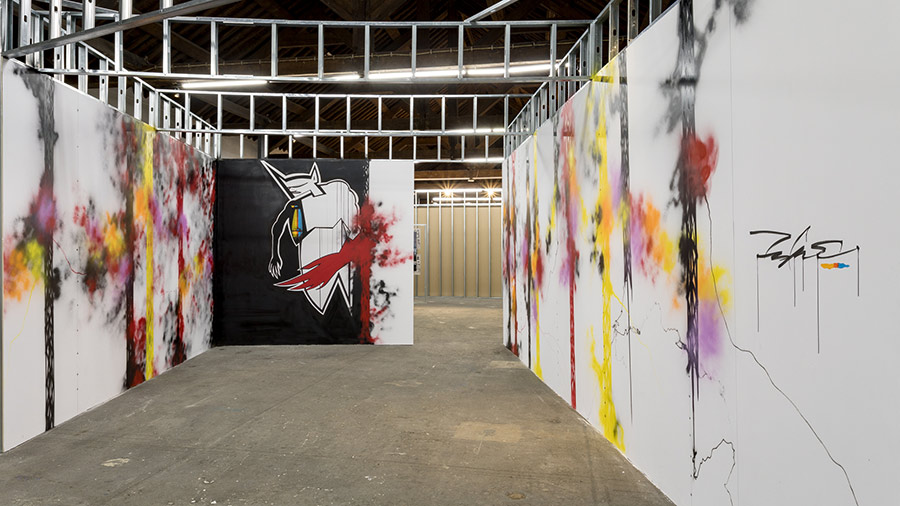
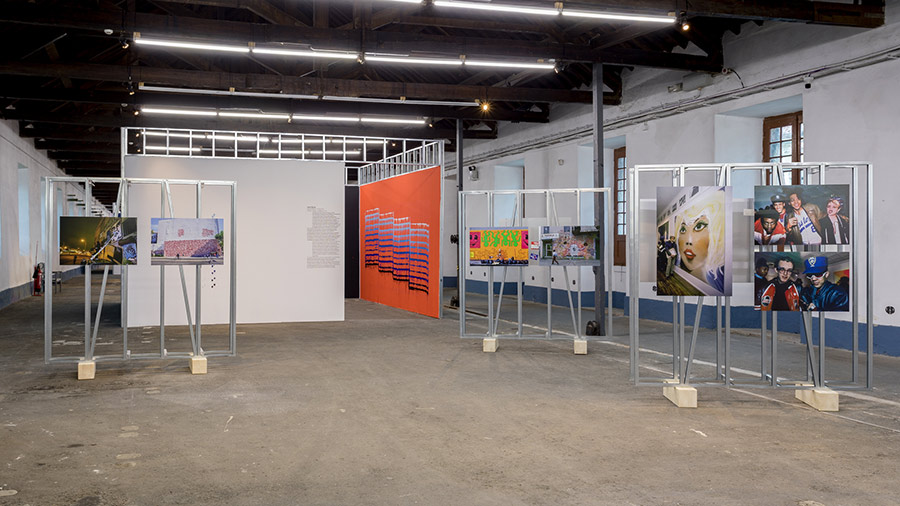
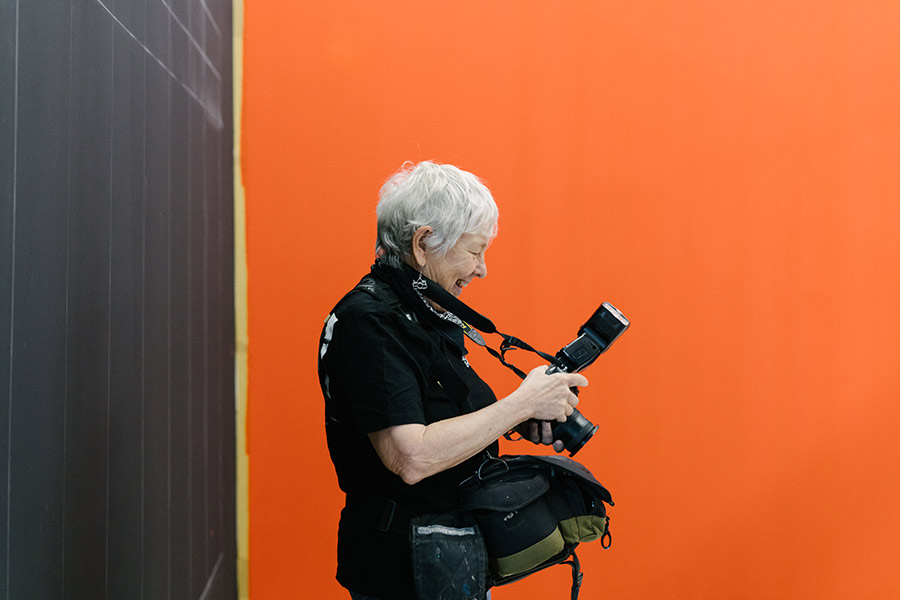
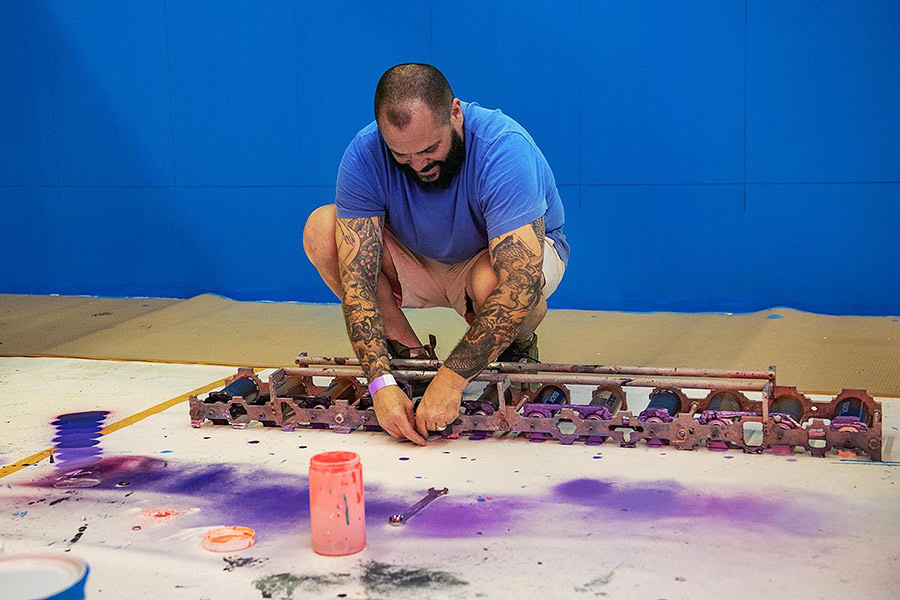
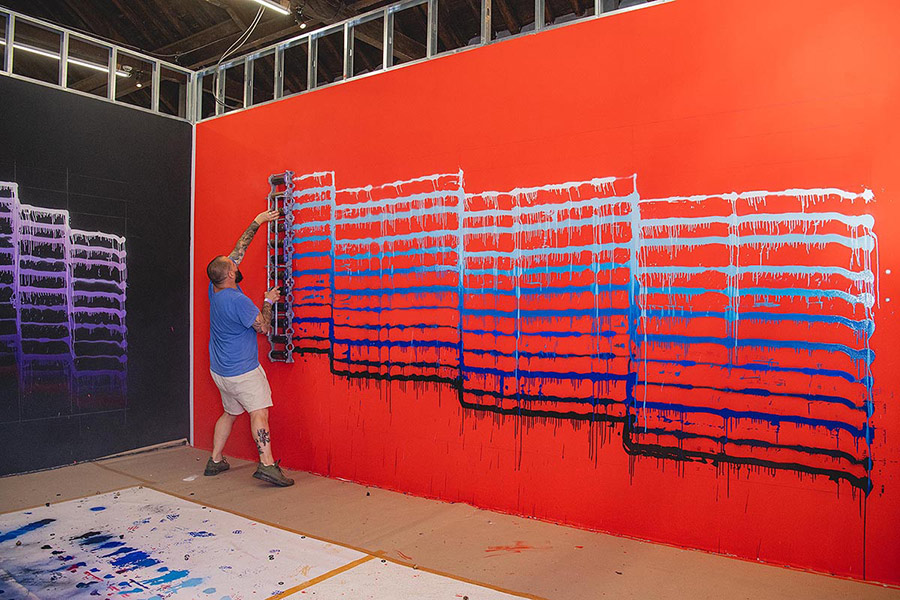
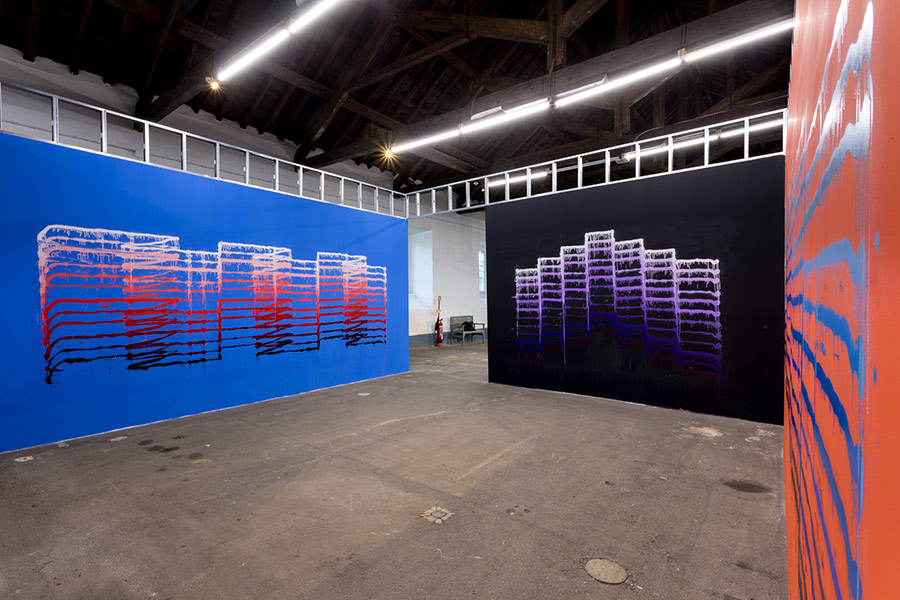
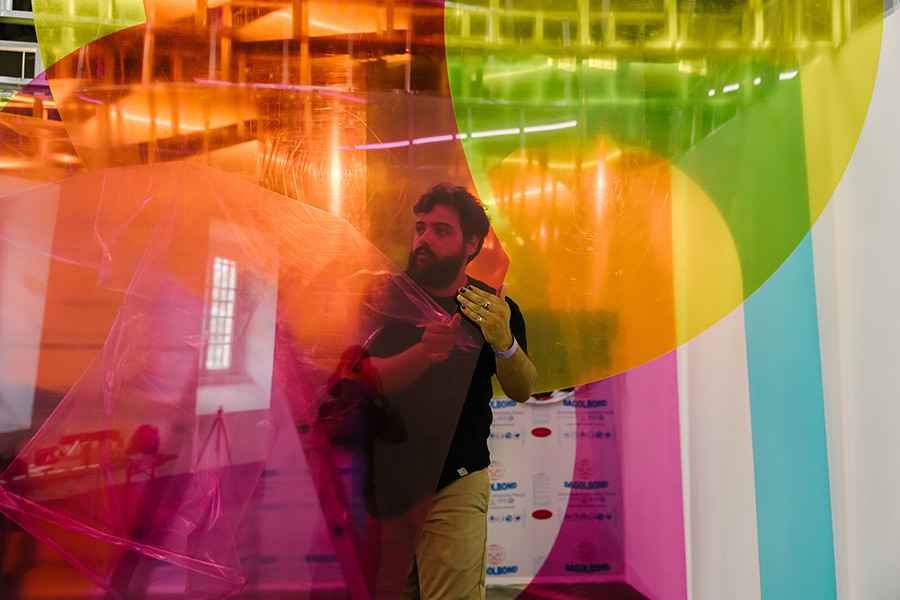
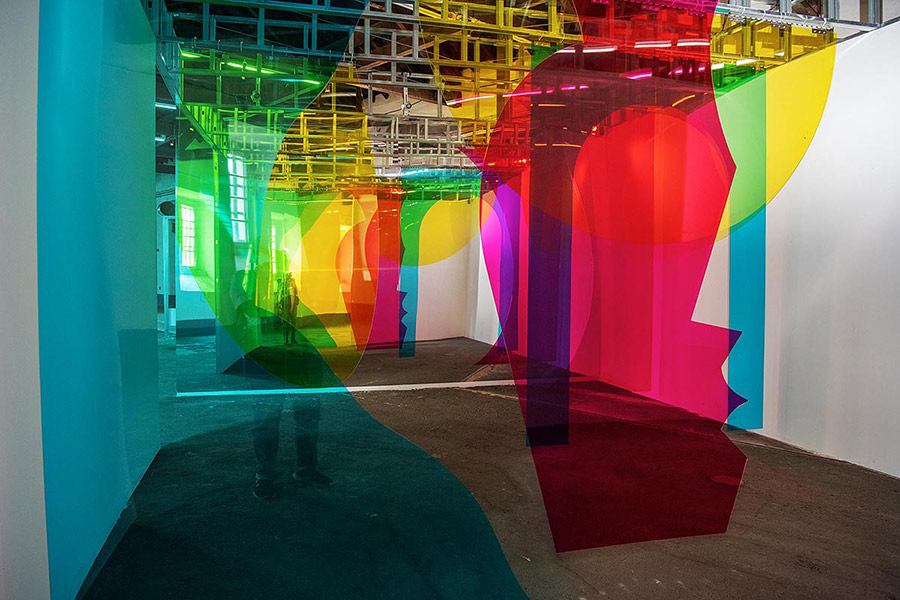
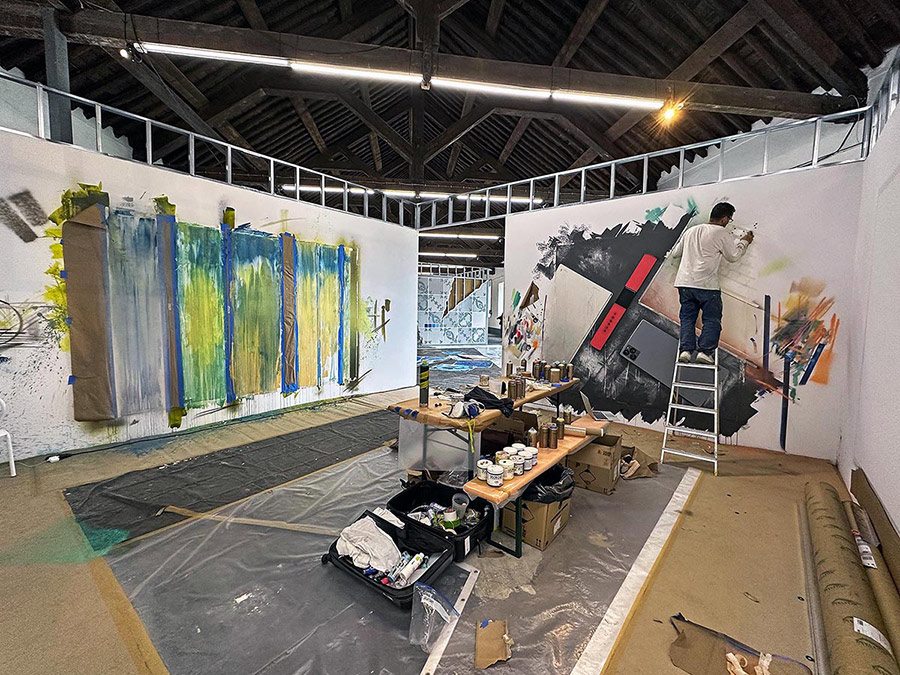
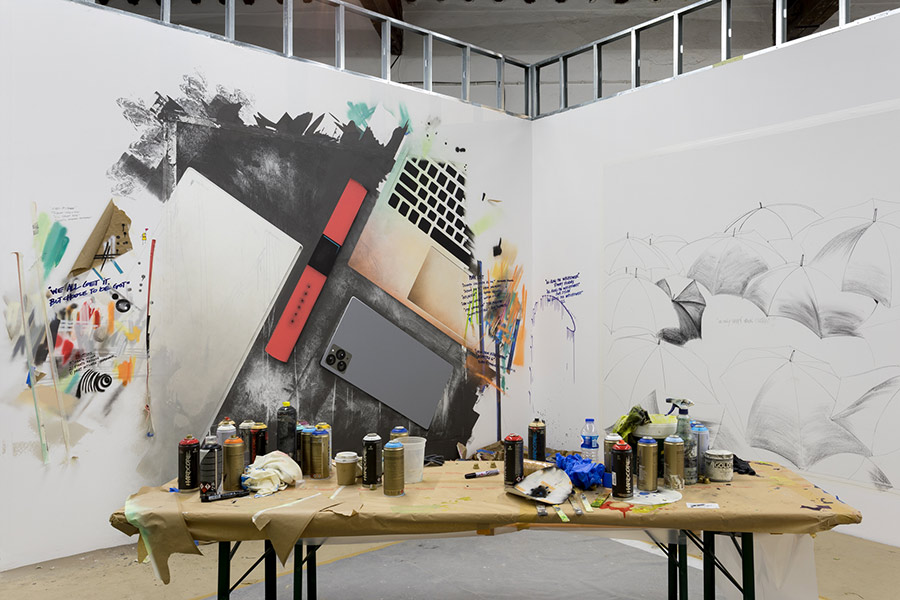
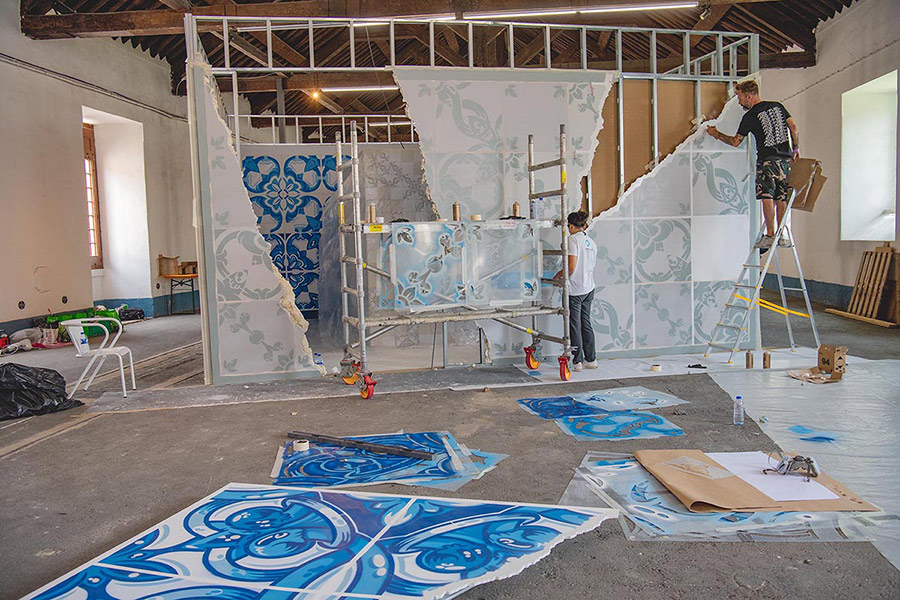
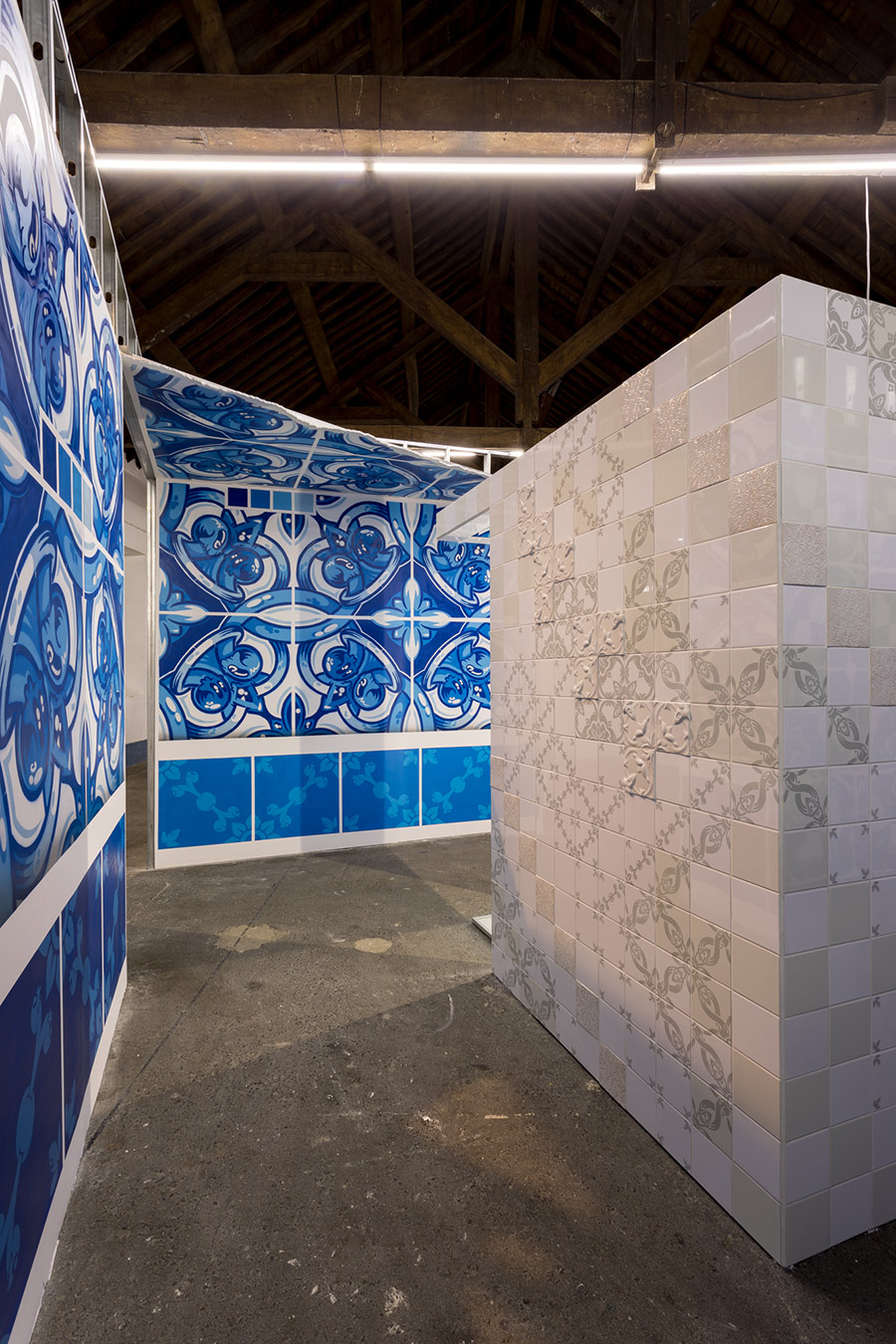
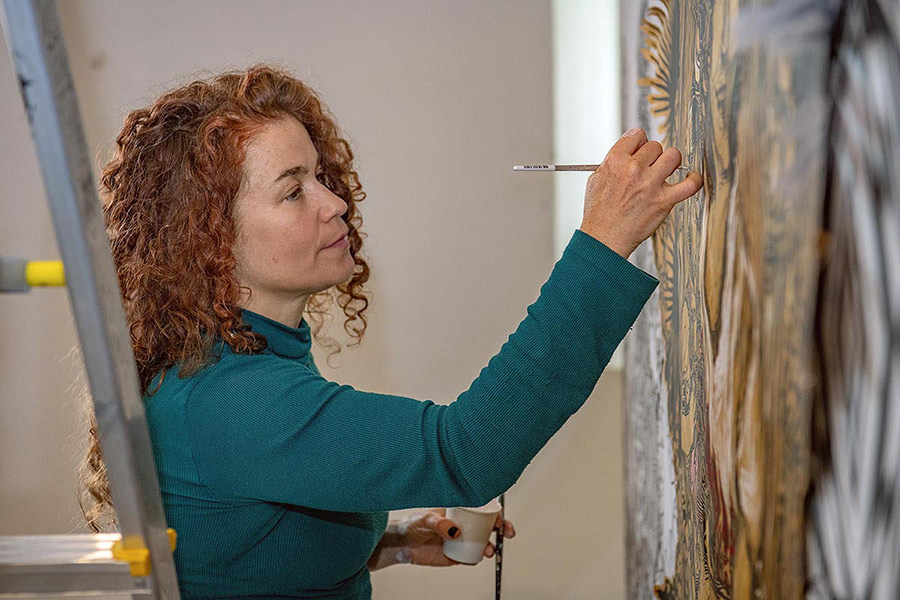
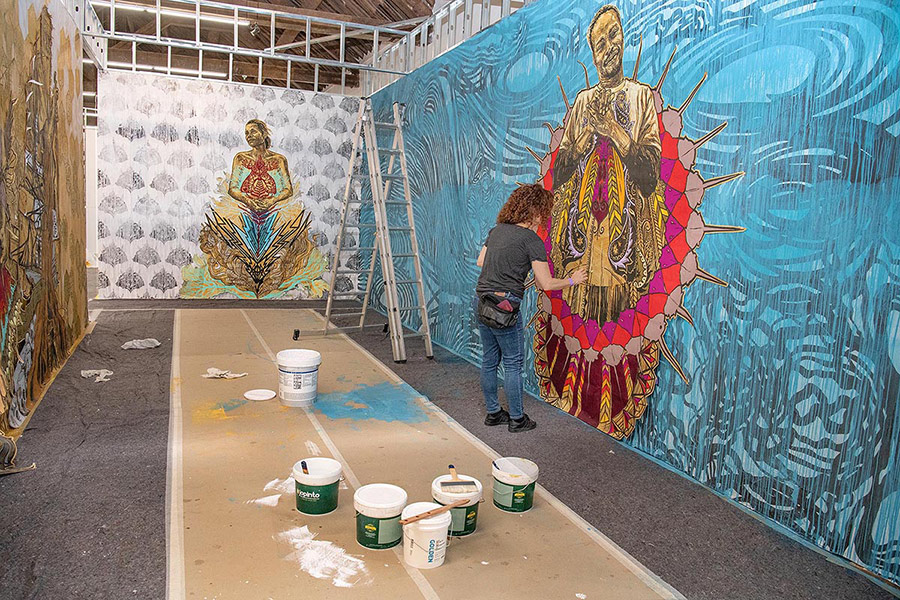
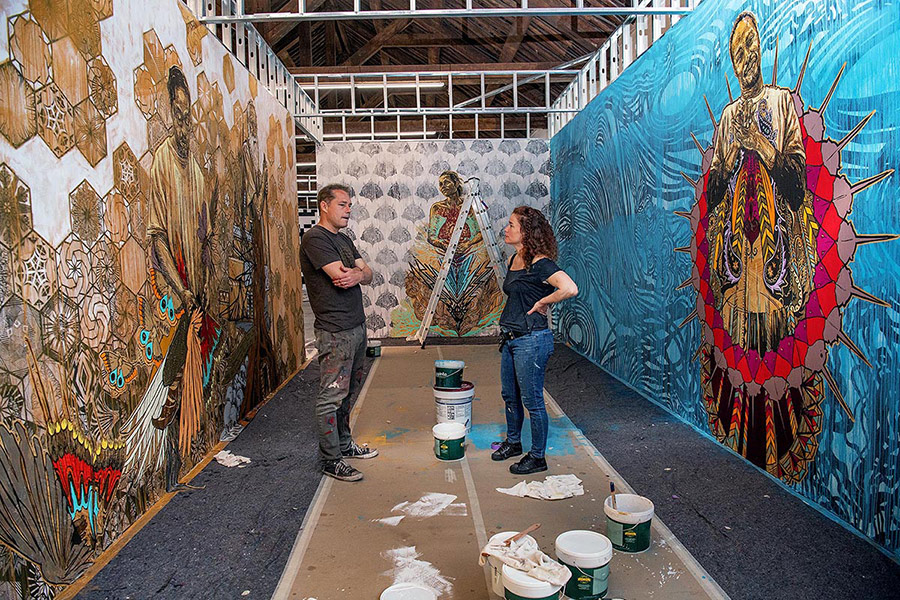
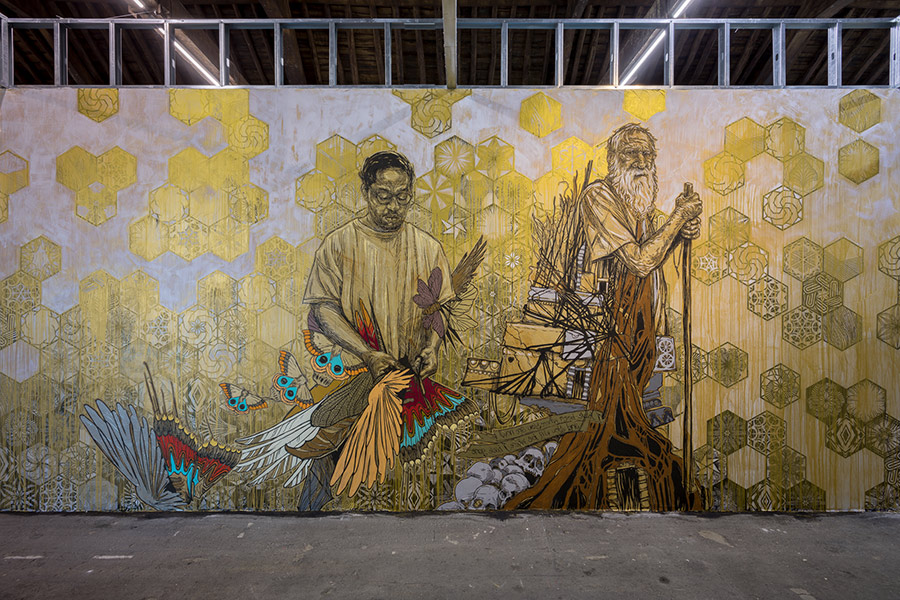
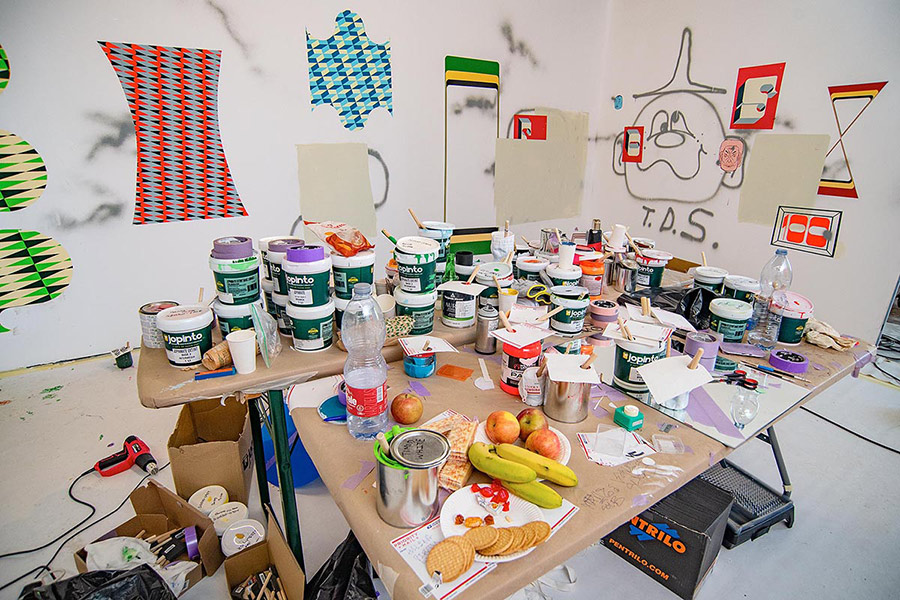
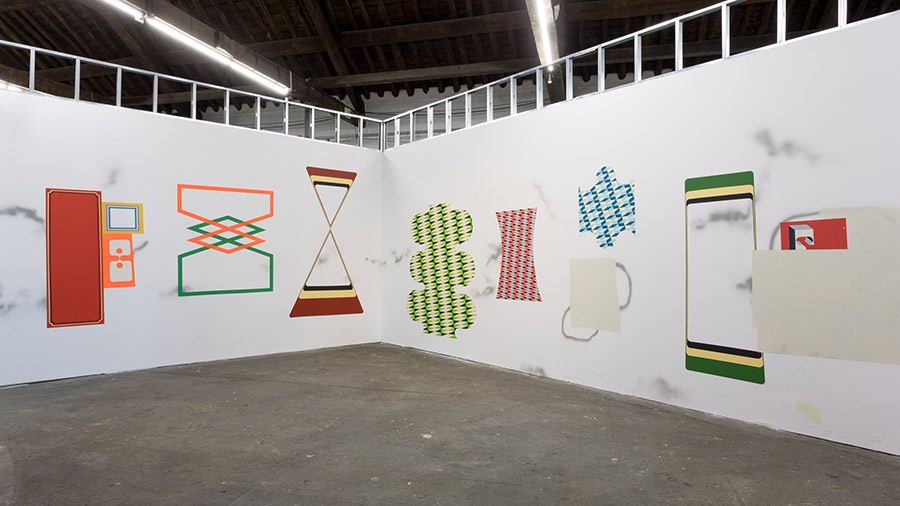
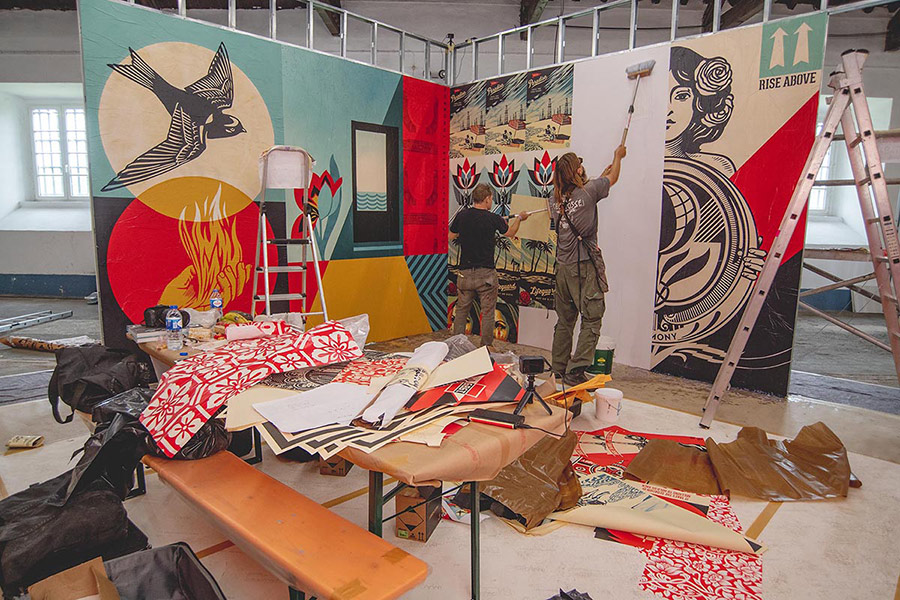
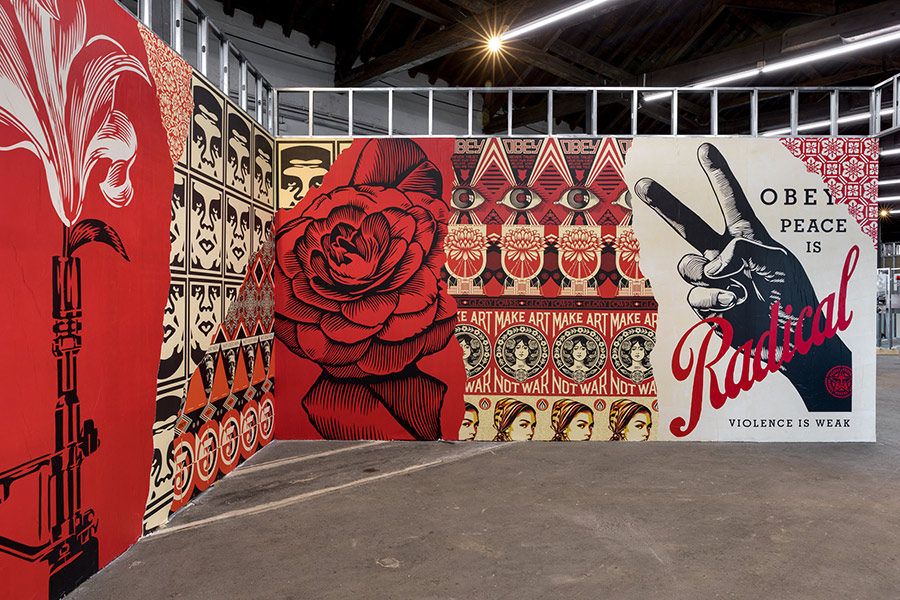
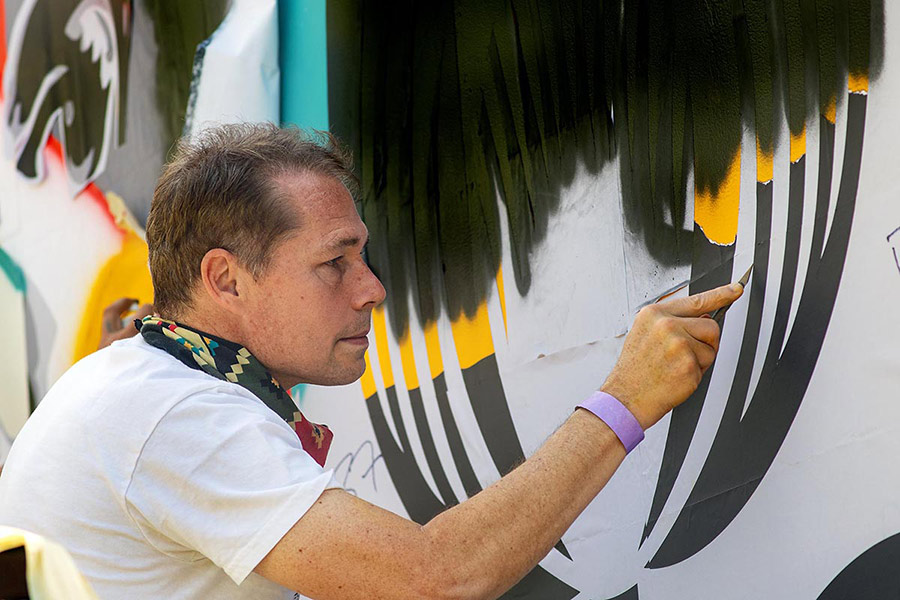
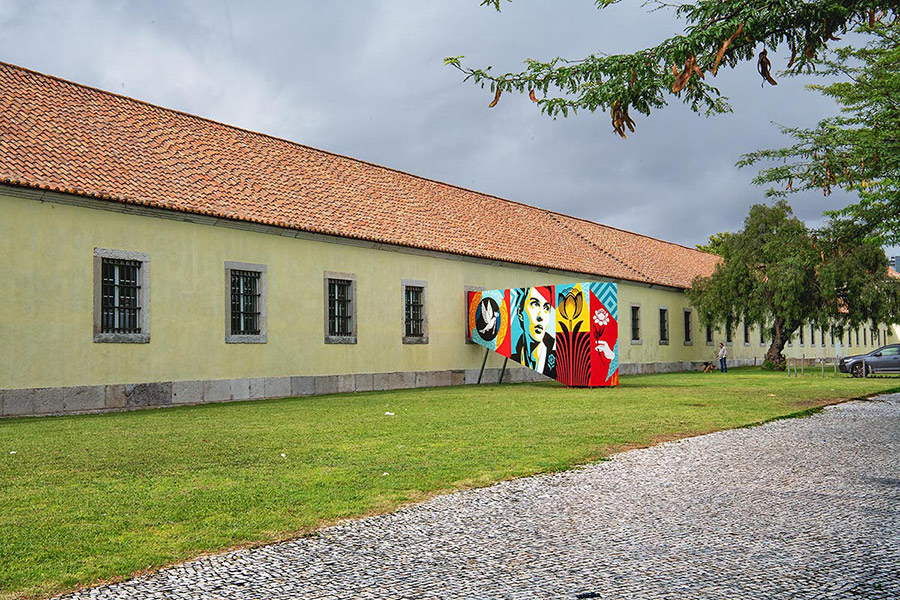
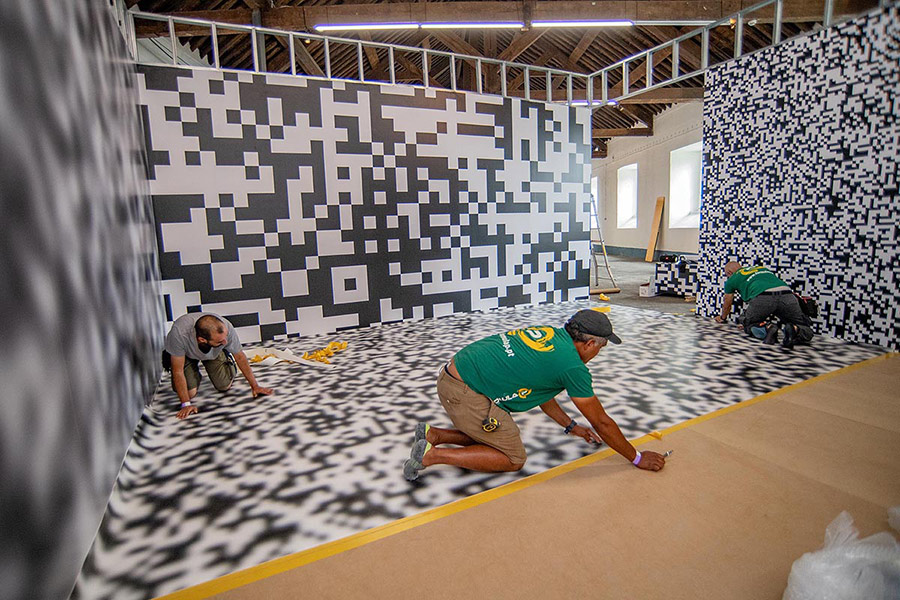
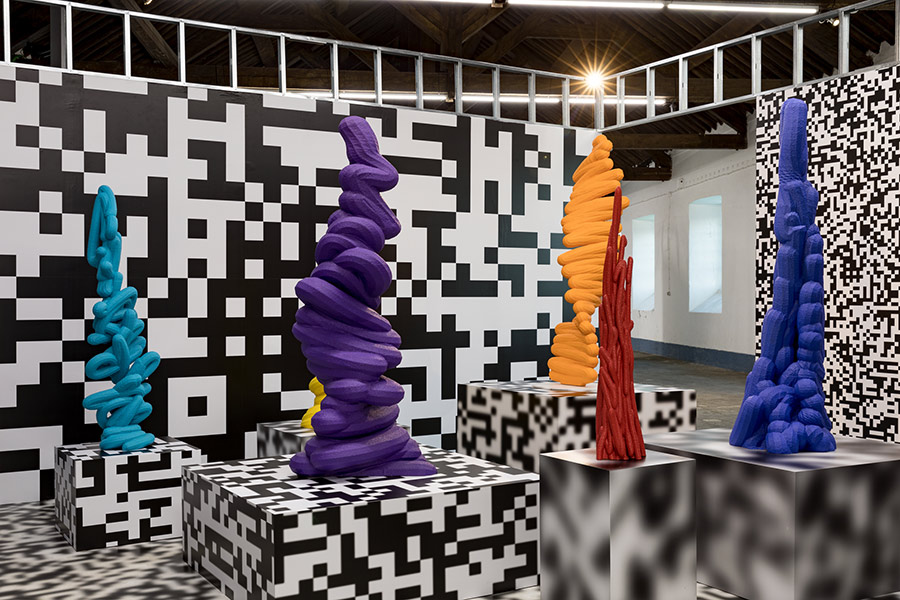
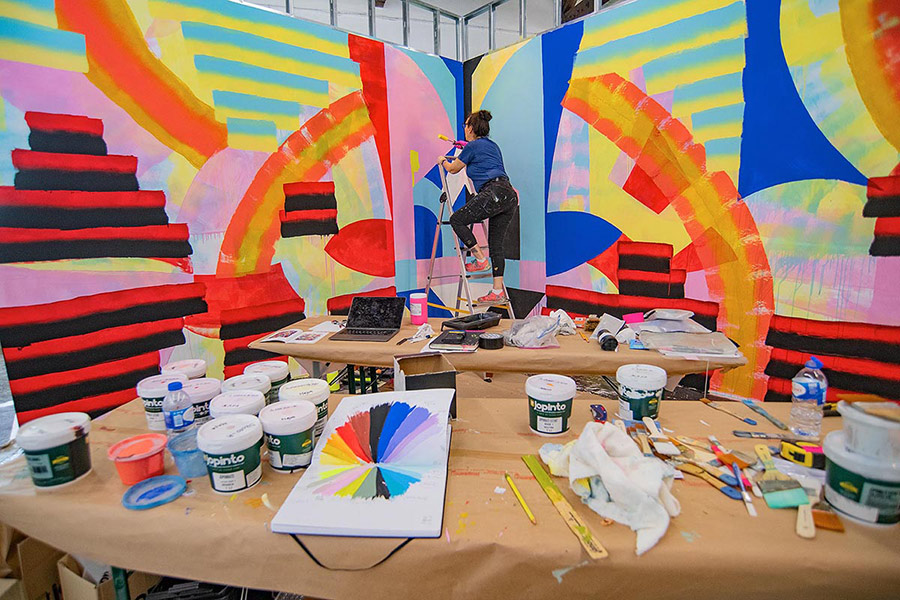
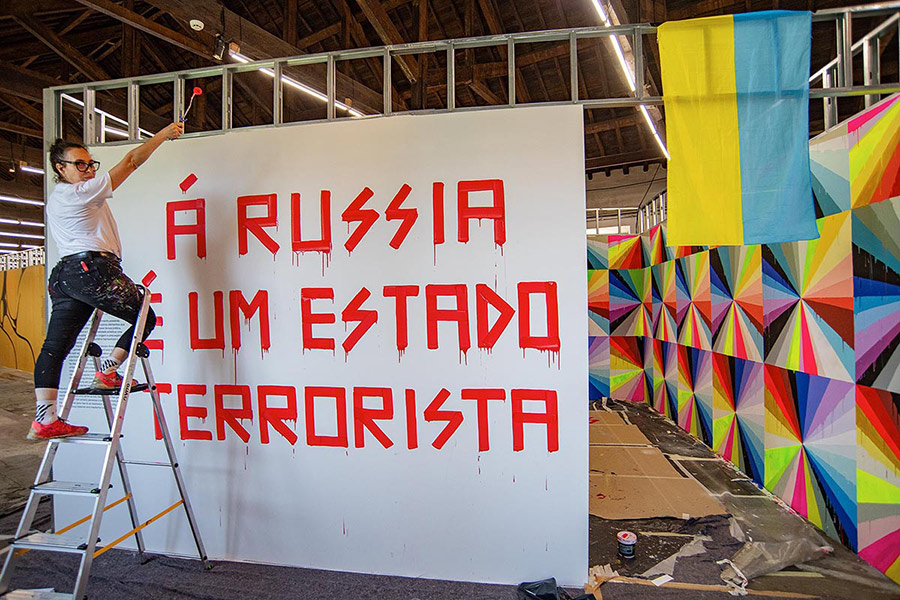
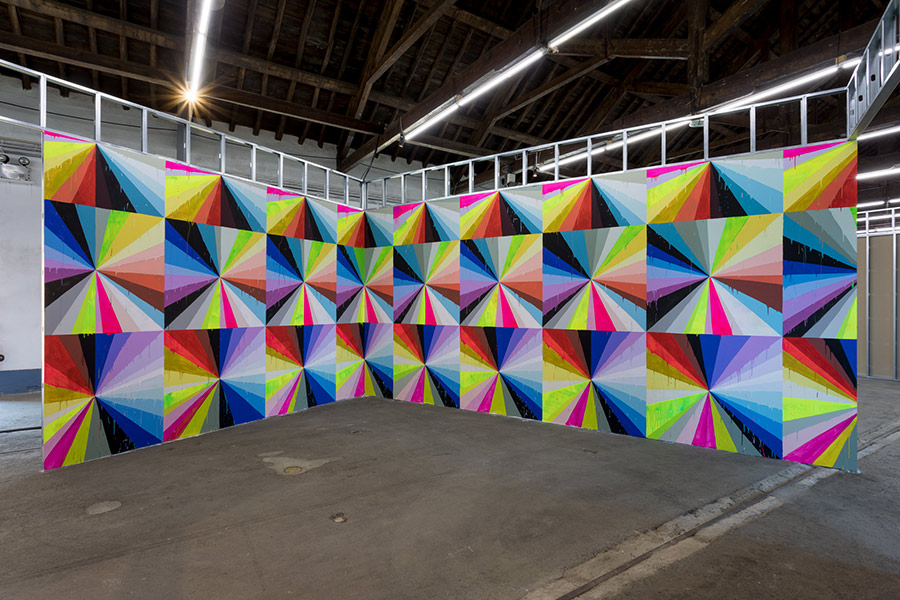
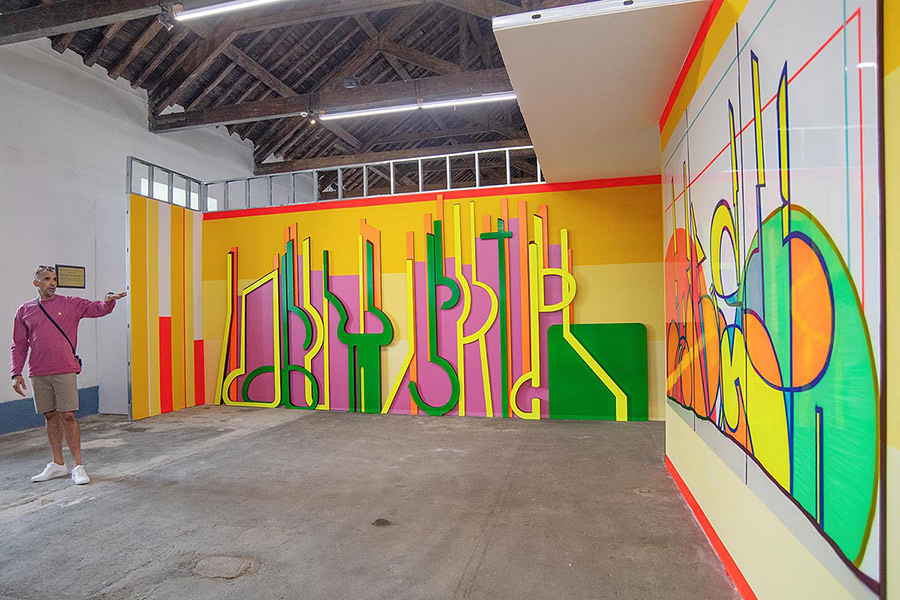
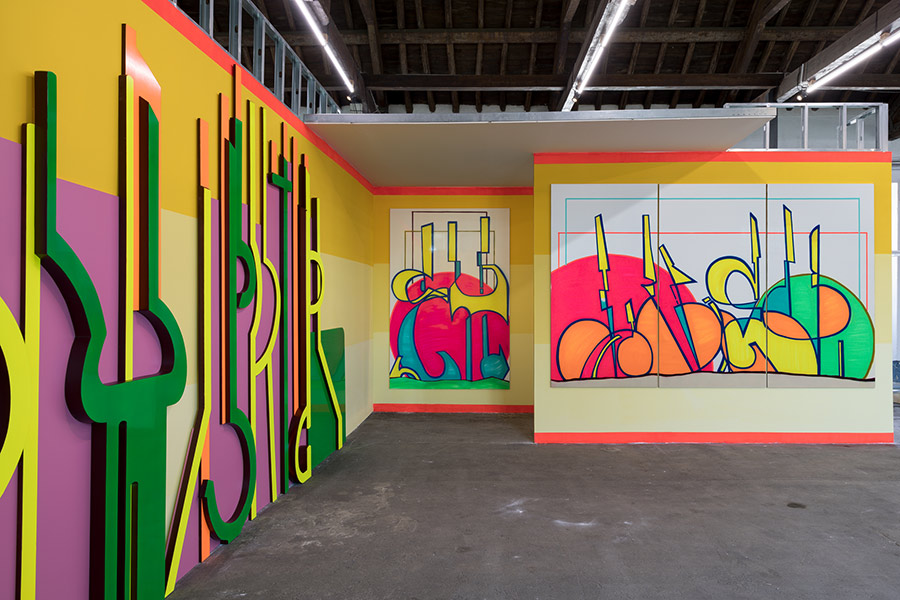
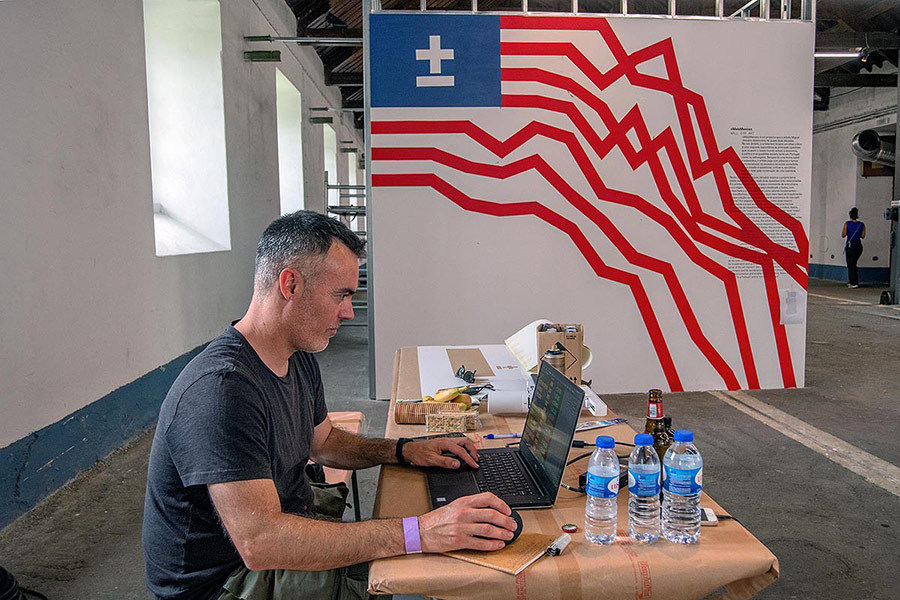
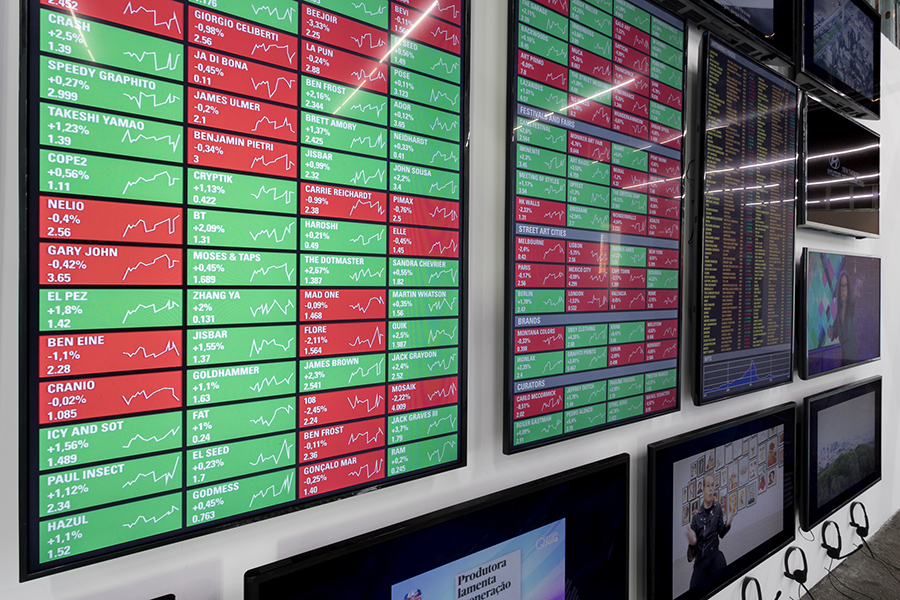
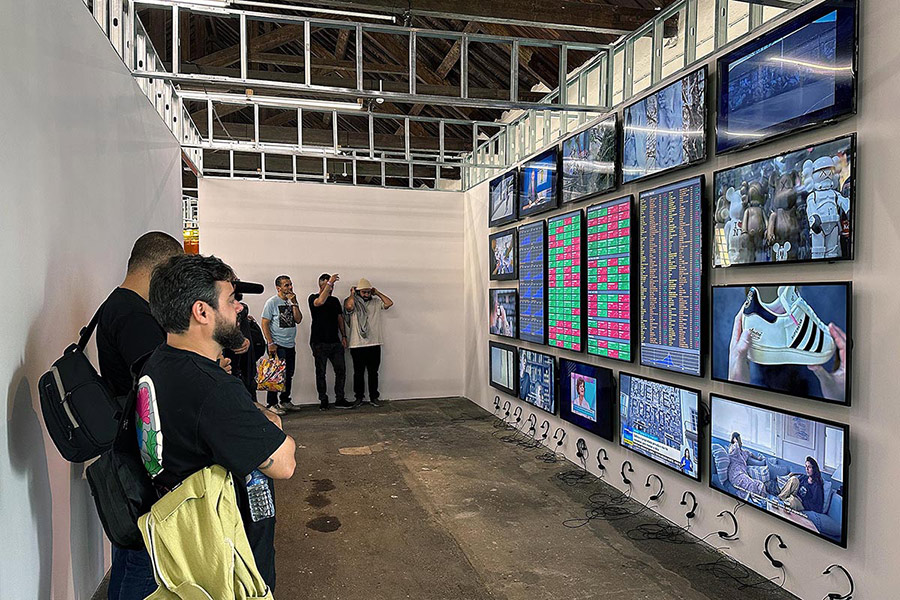
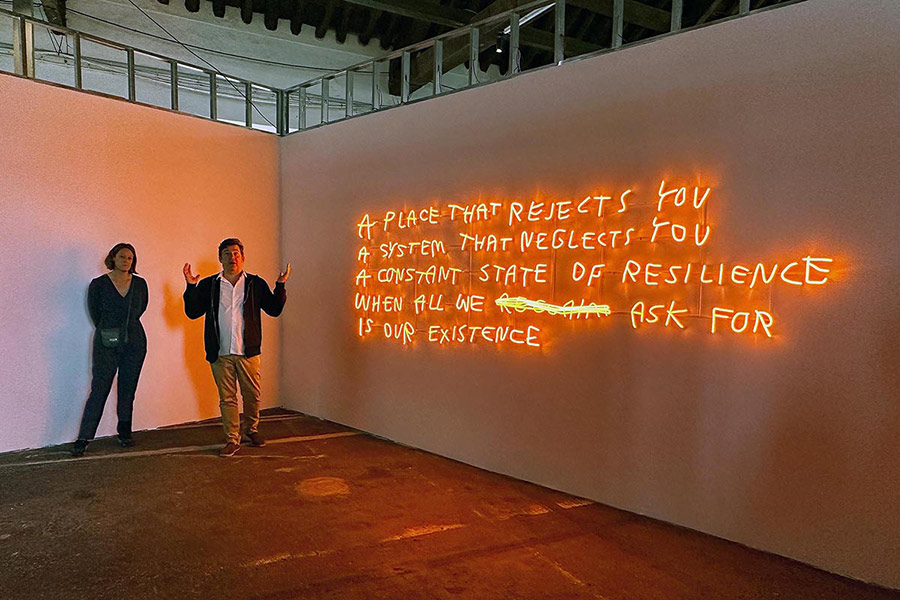
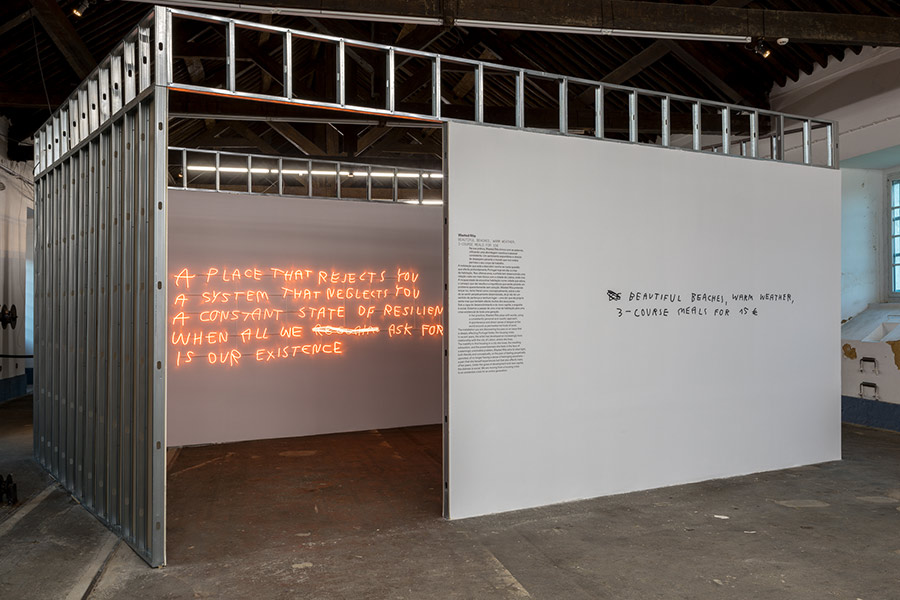
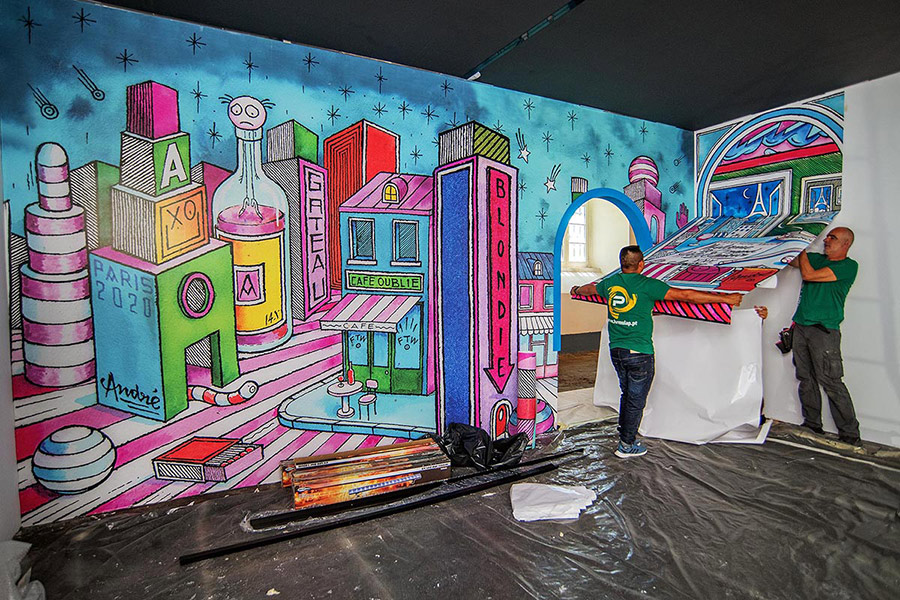
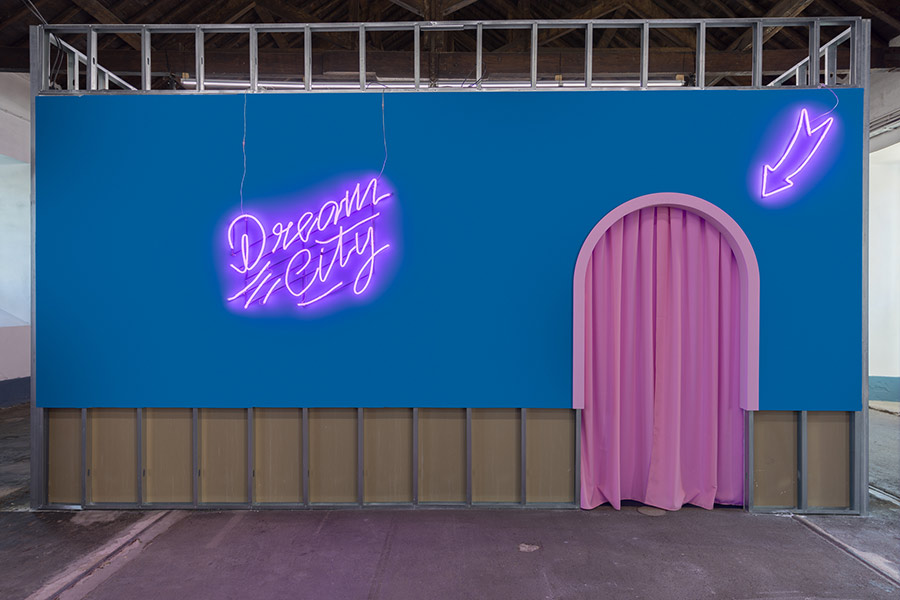
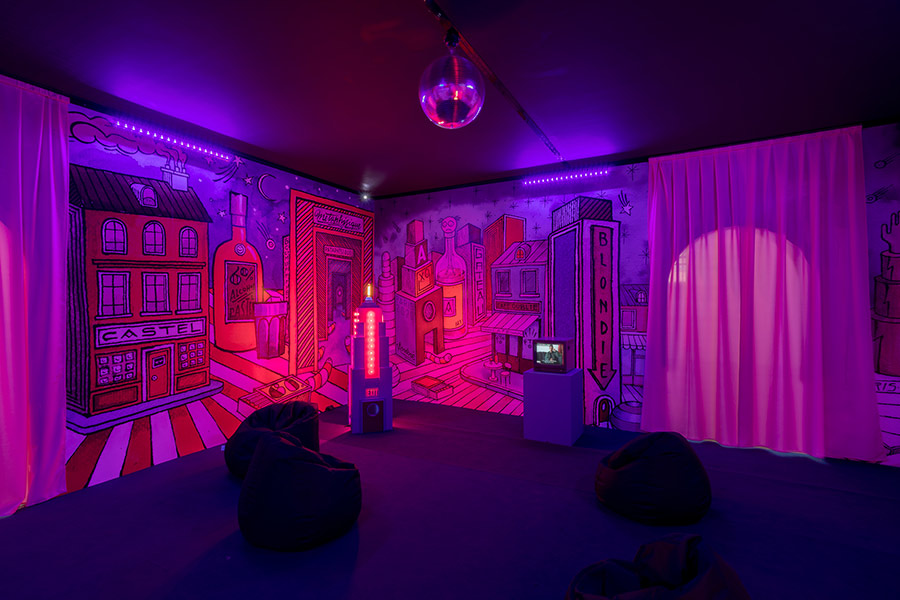
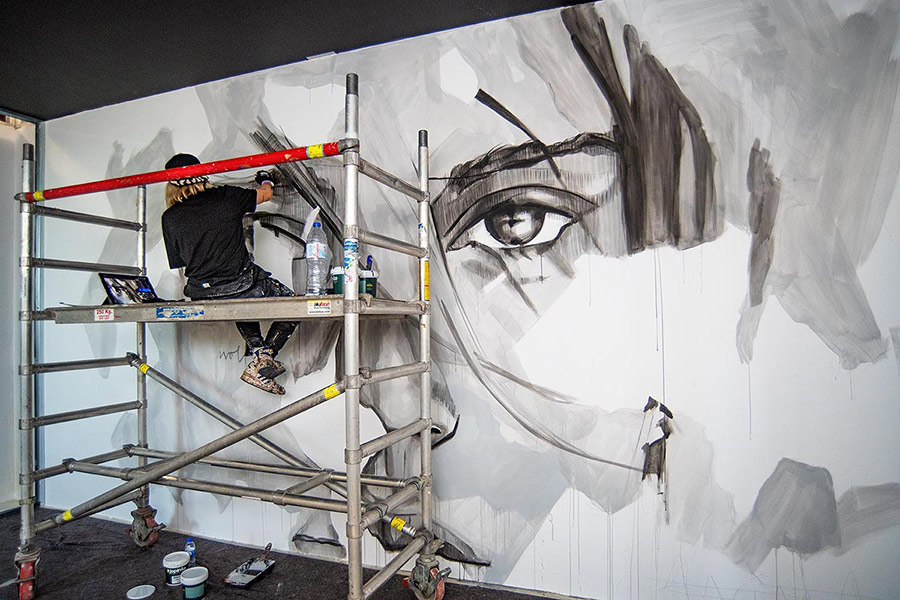
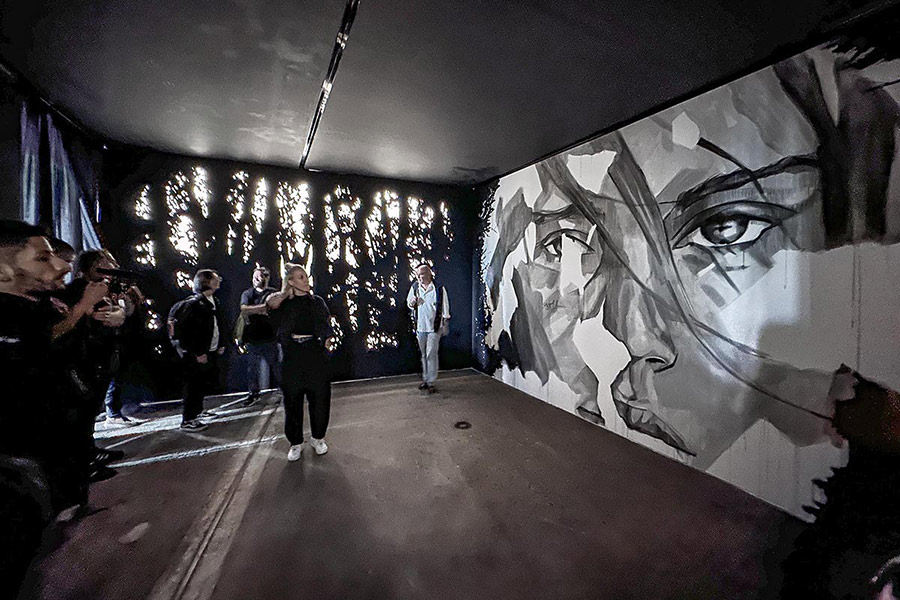
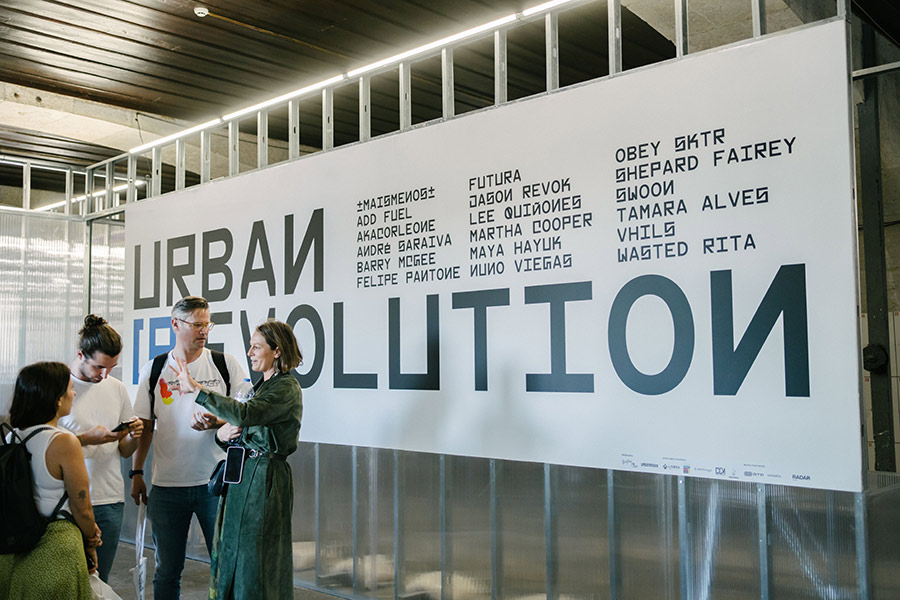
 BROOKLYN STREET ART LOVES YOU MORE EVERY DAY
BROOKLYN STREET ART LOVES YOU MORE EVERY DAY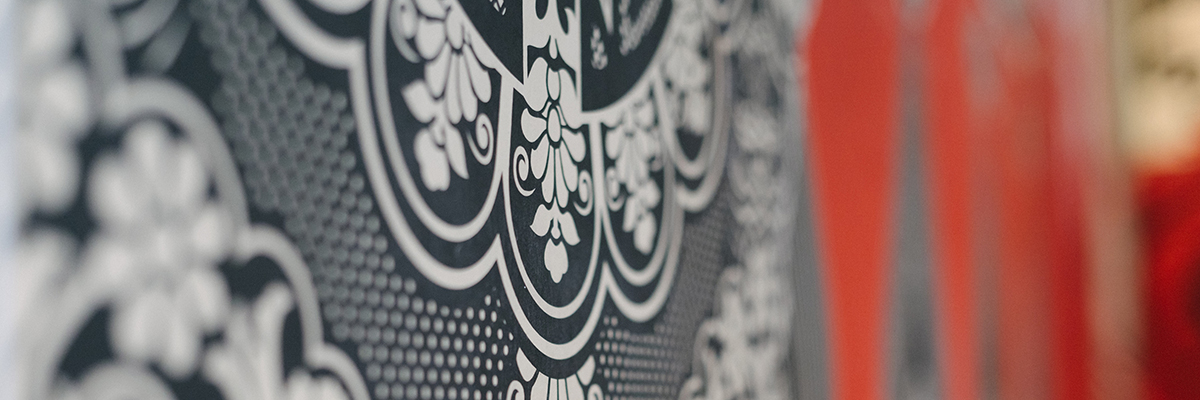









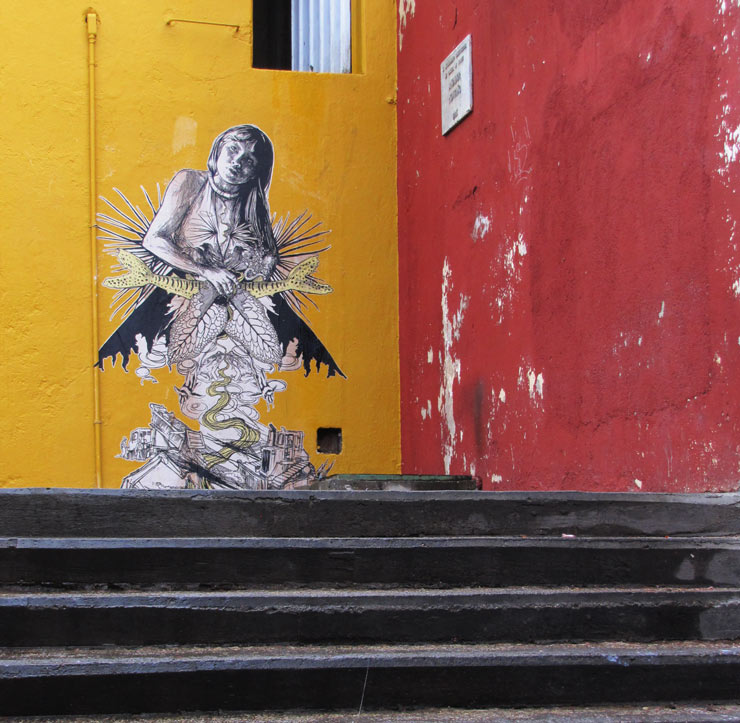
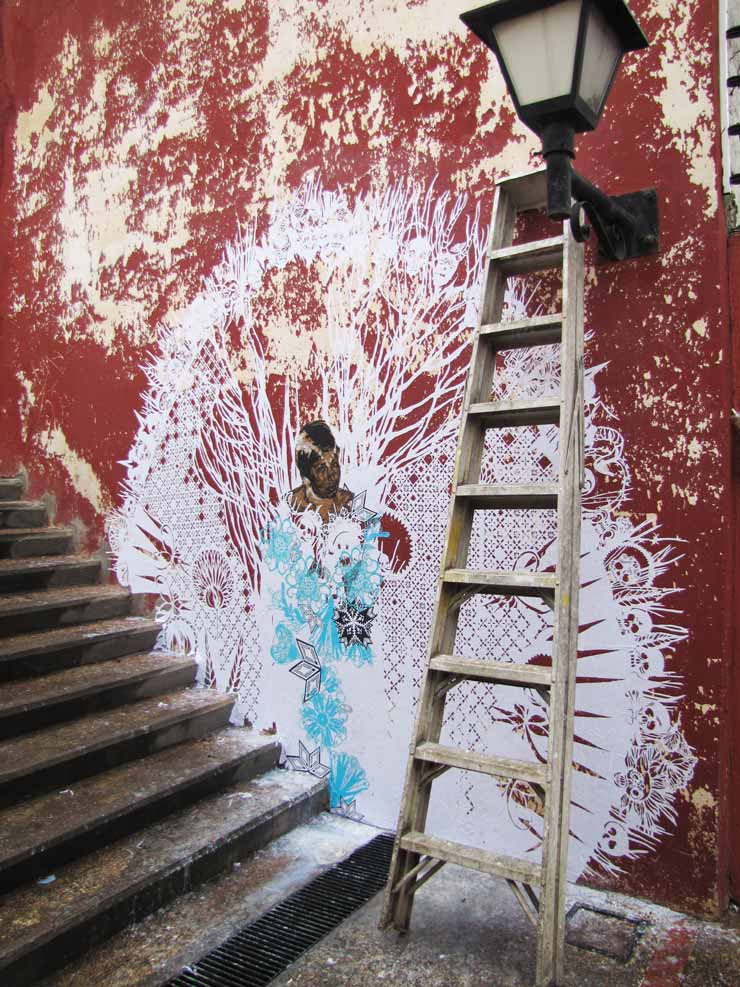
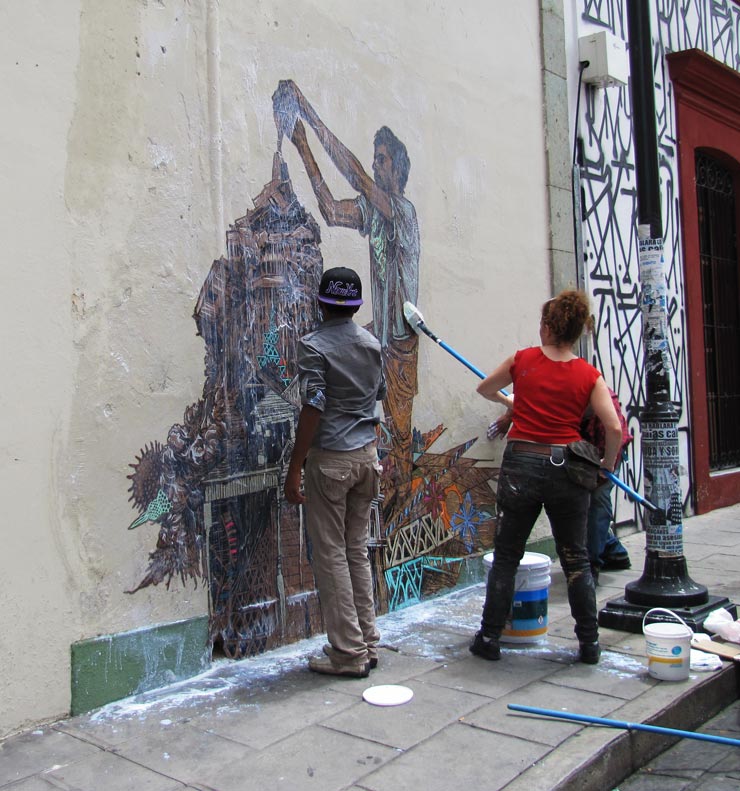
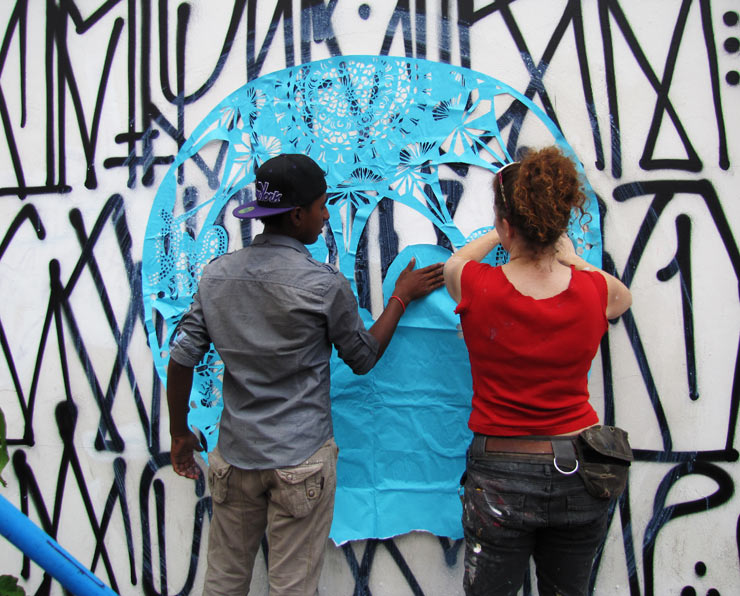
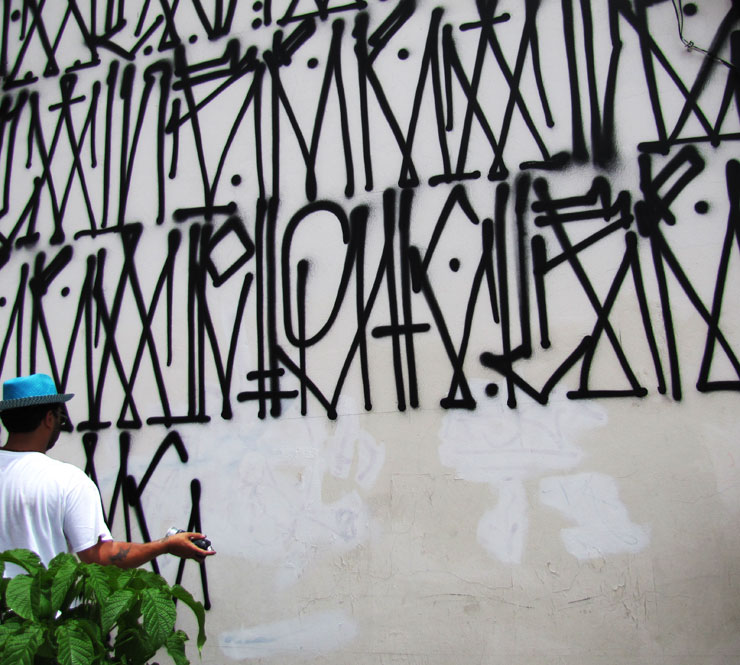
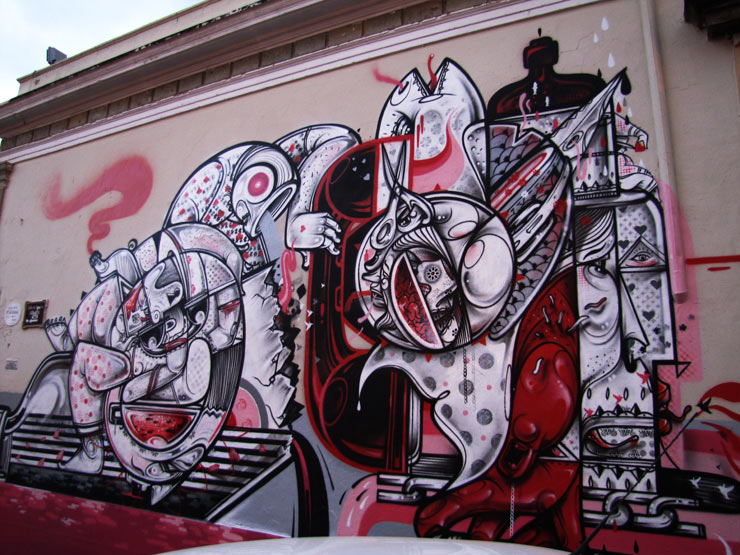

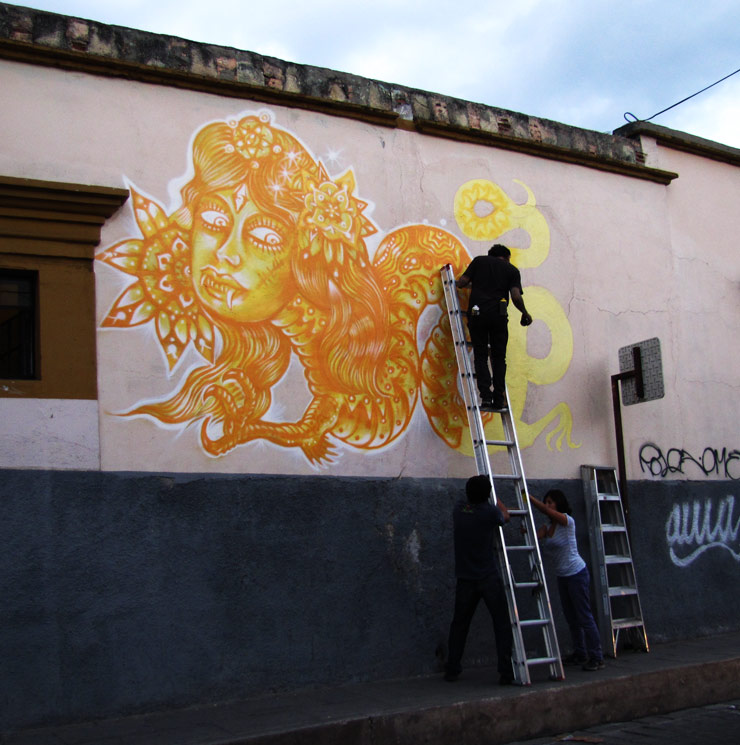
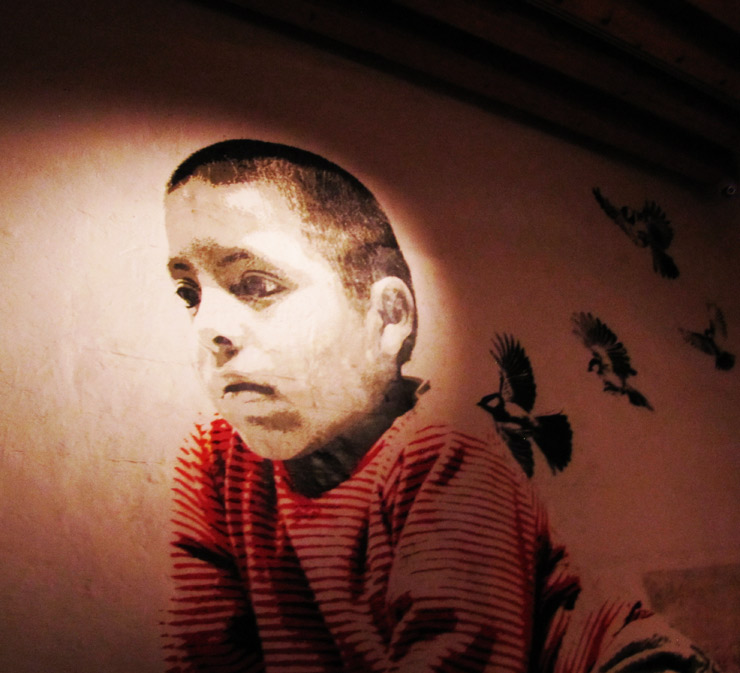
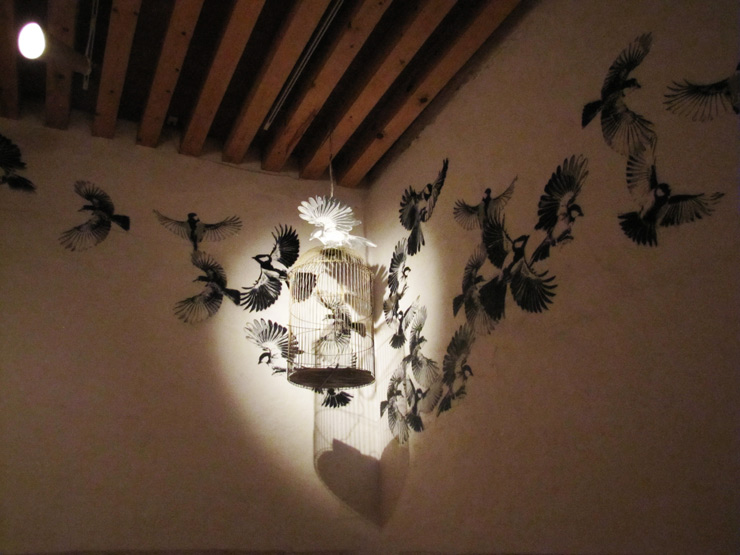
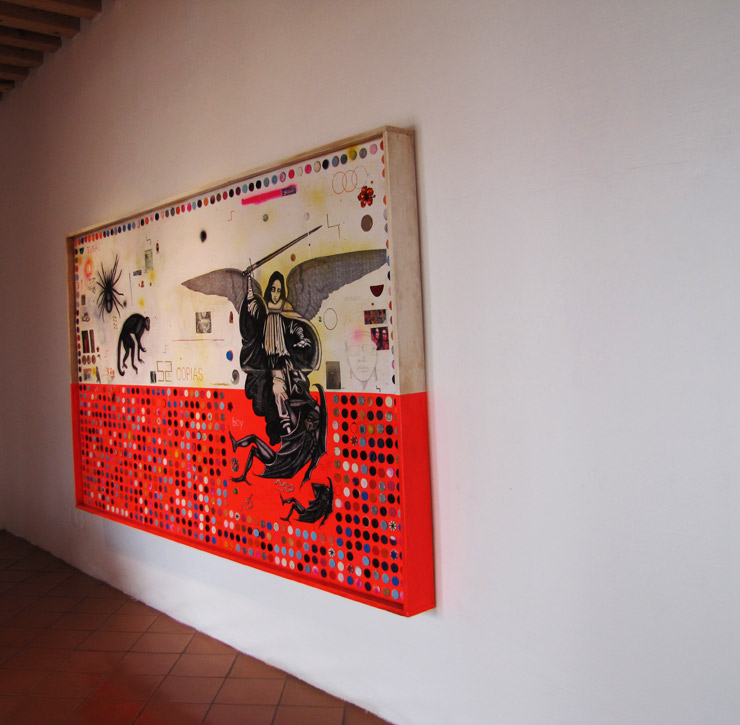
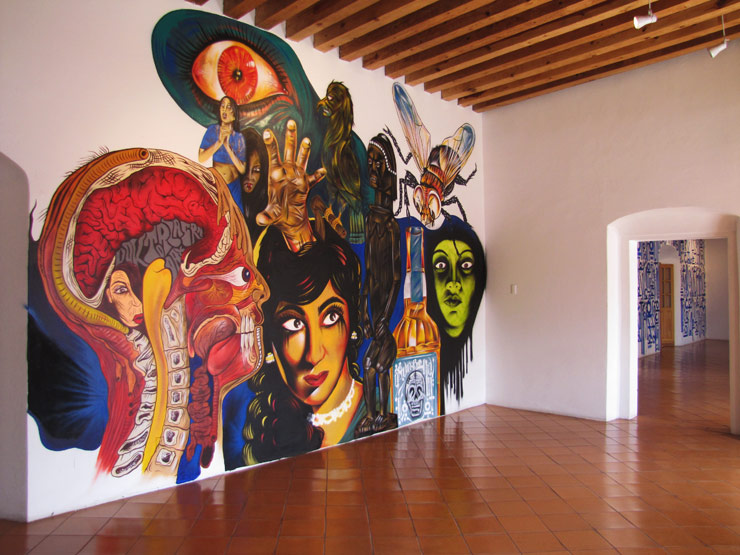
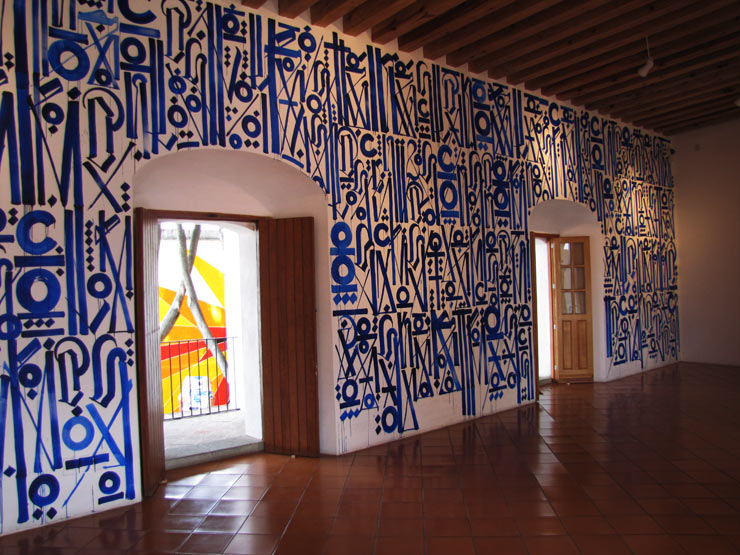
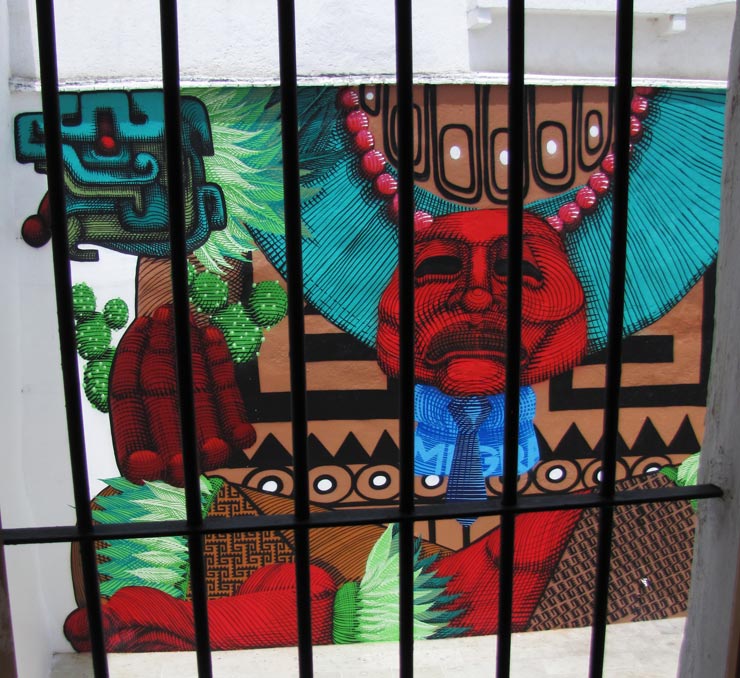
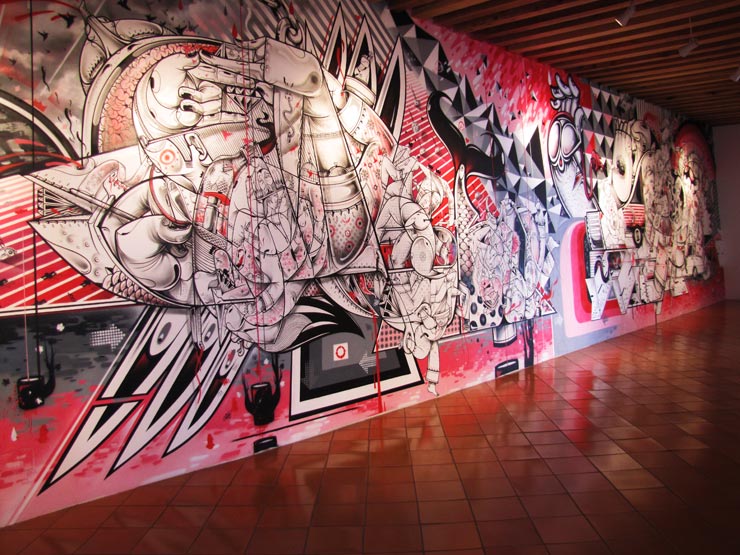
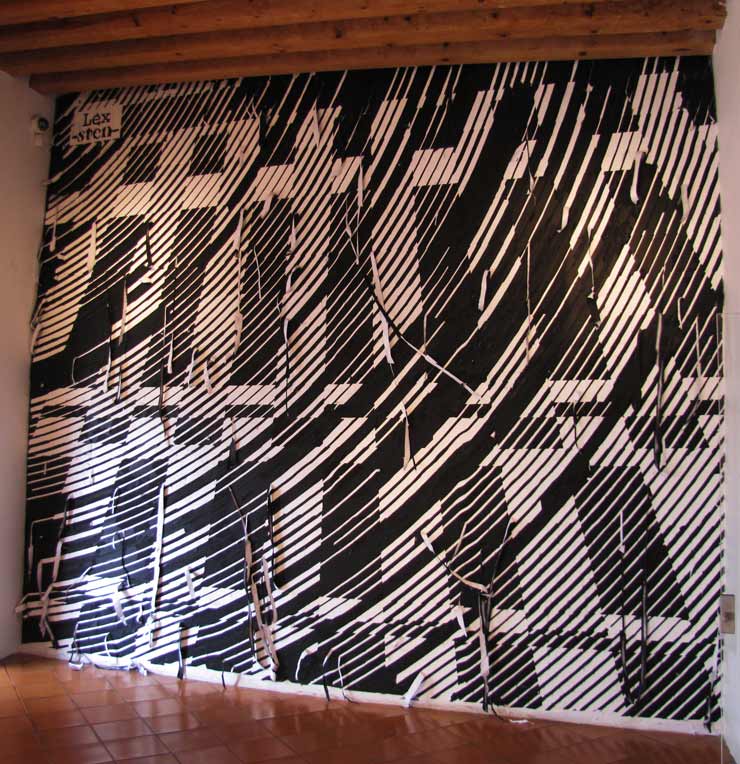
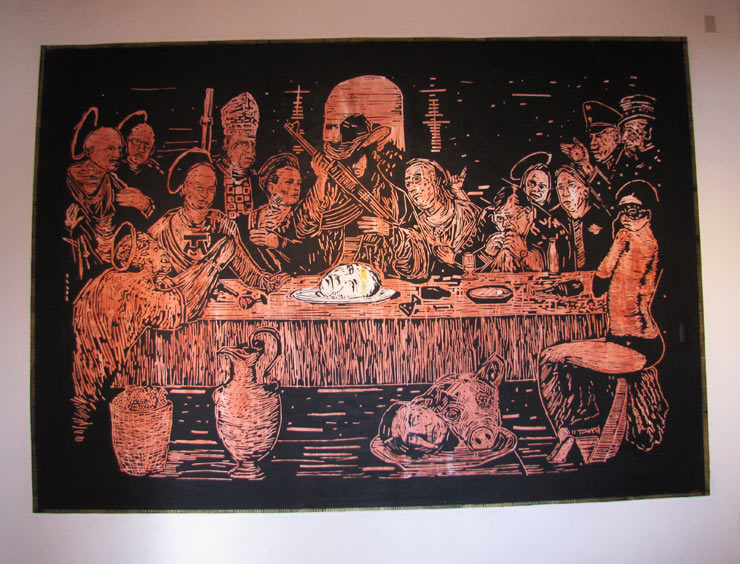
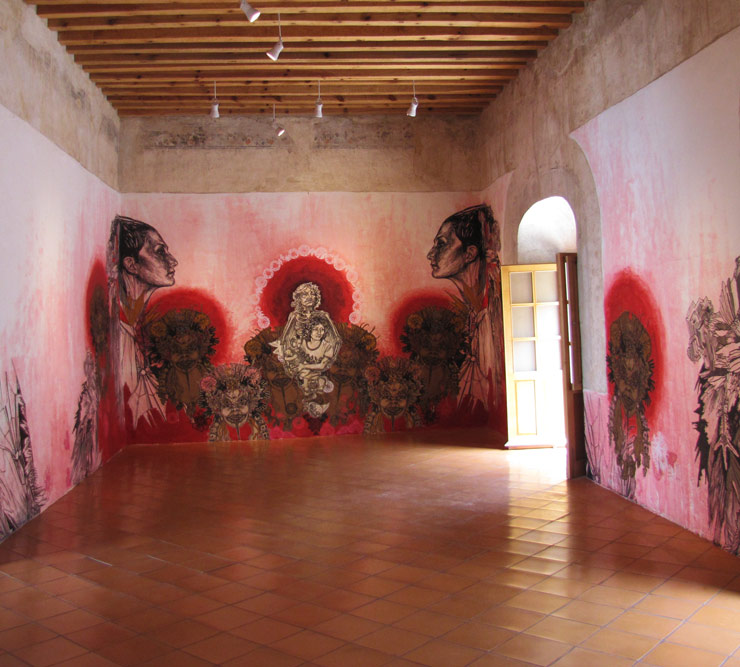
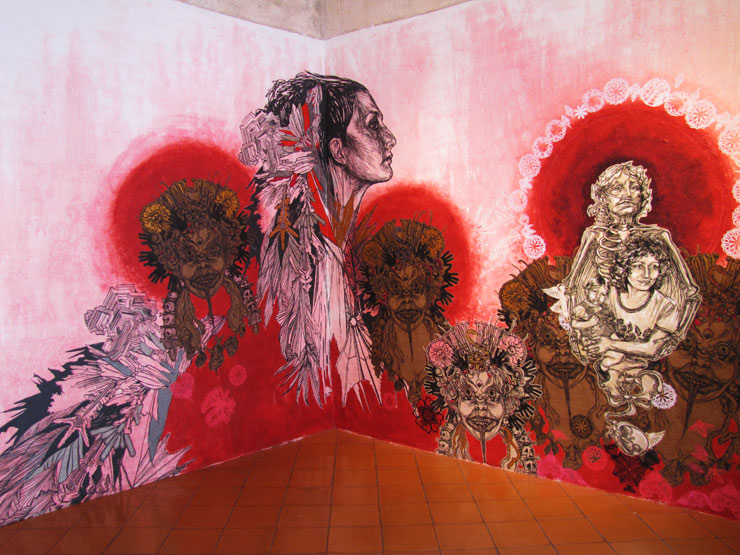
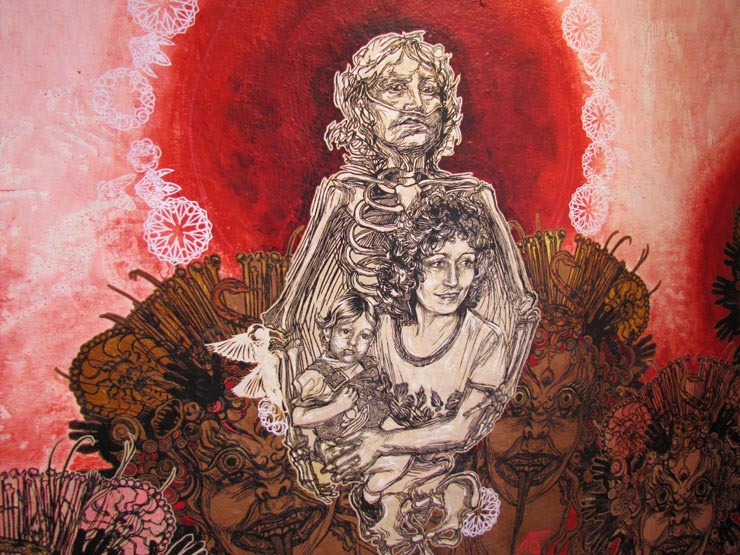
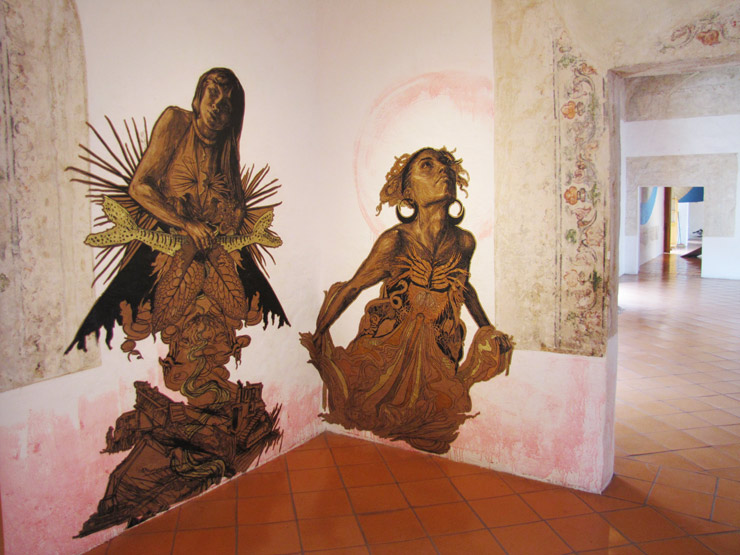
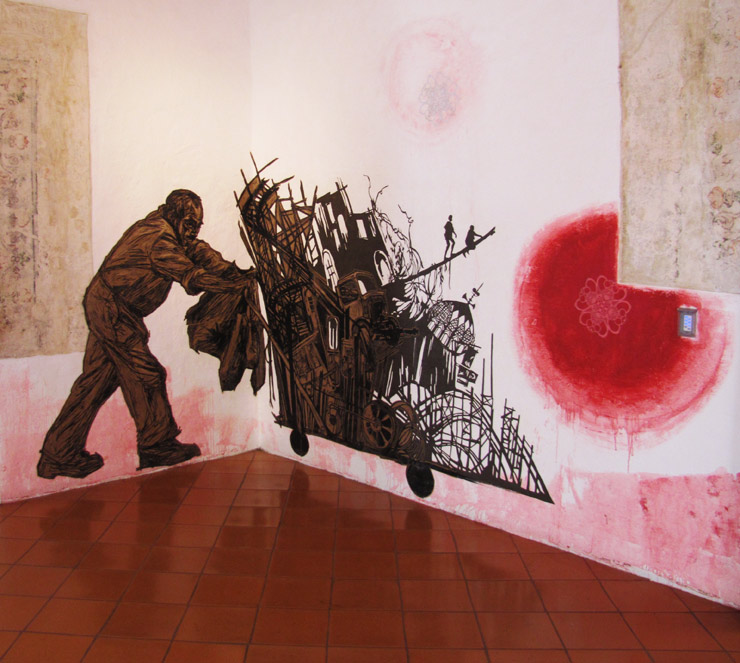
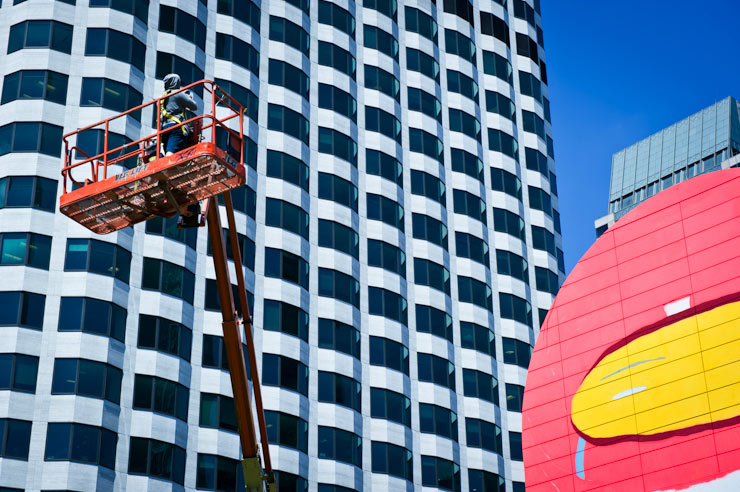
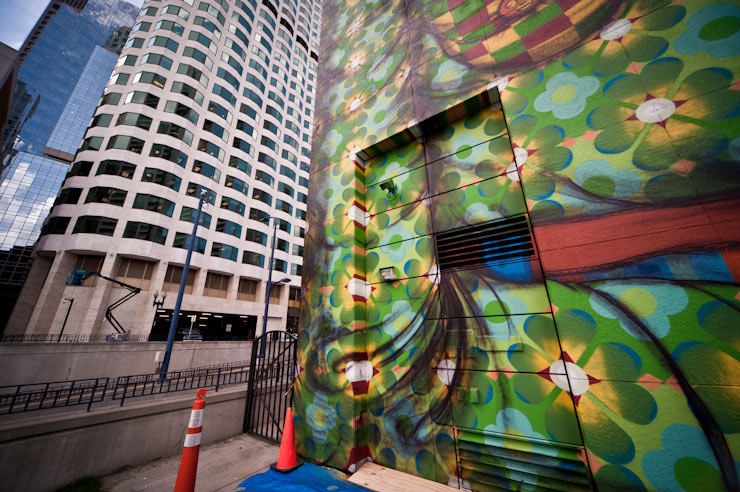
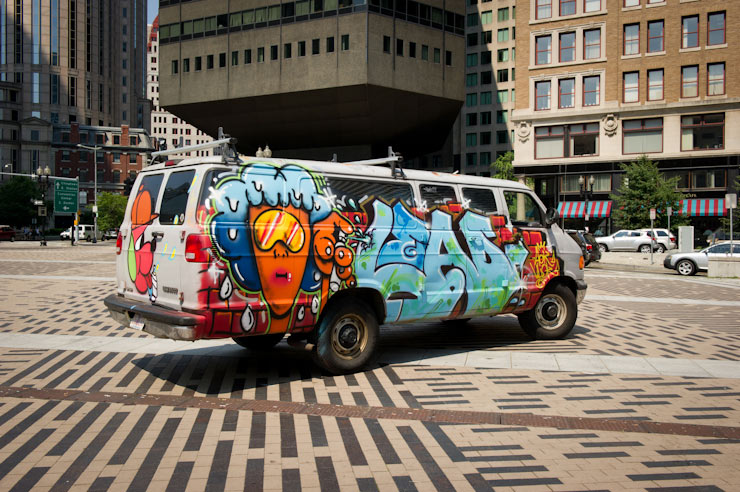
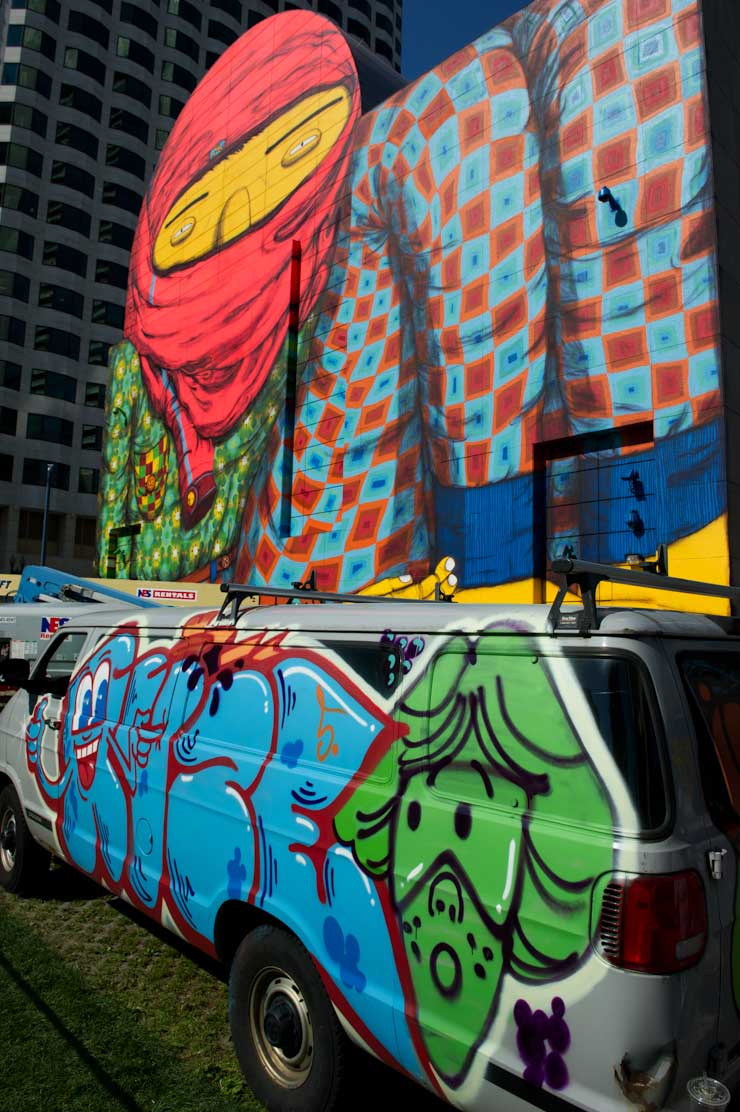
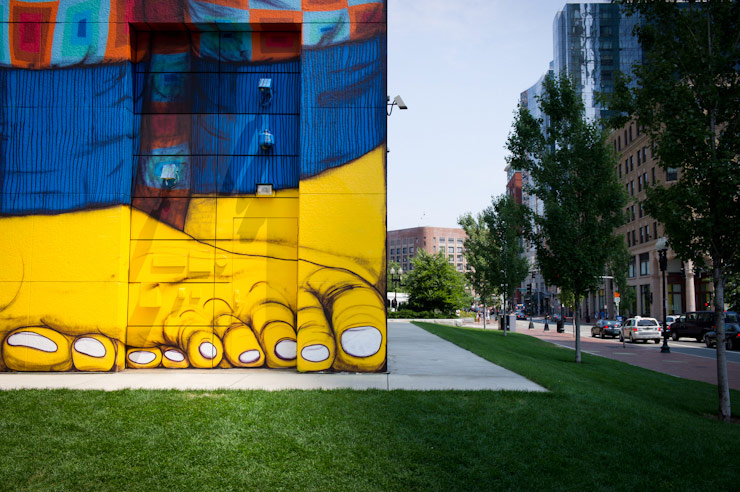
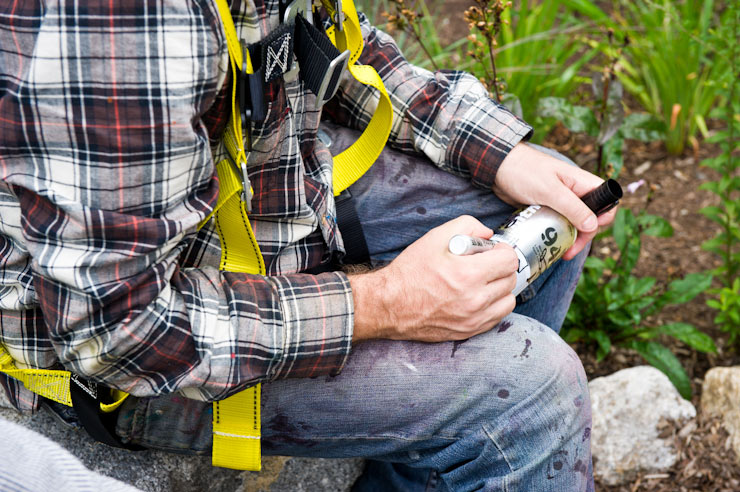
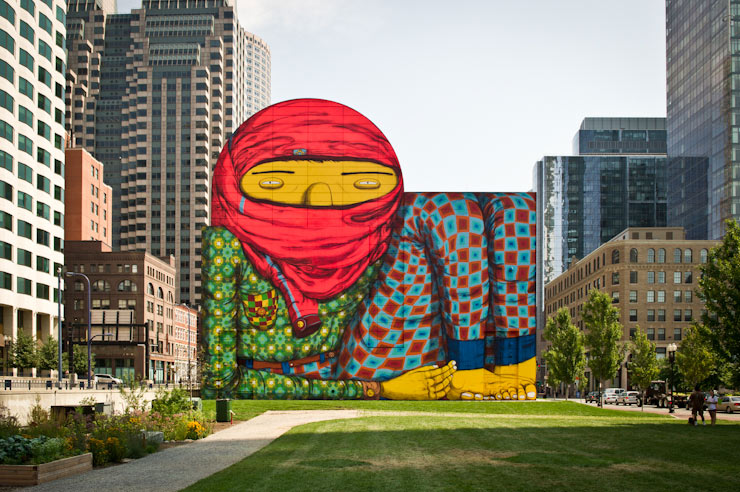
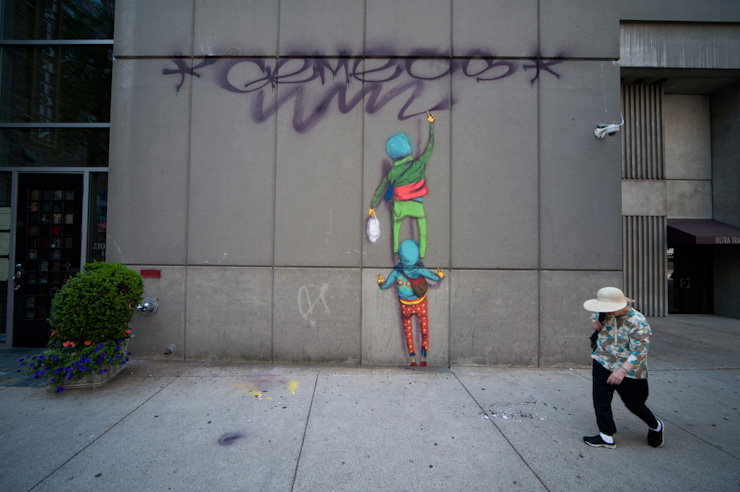
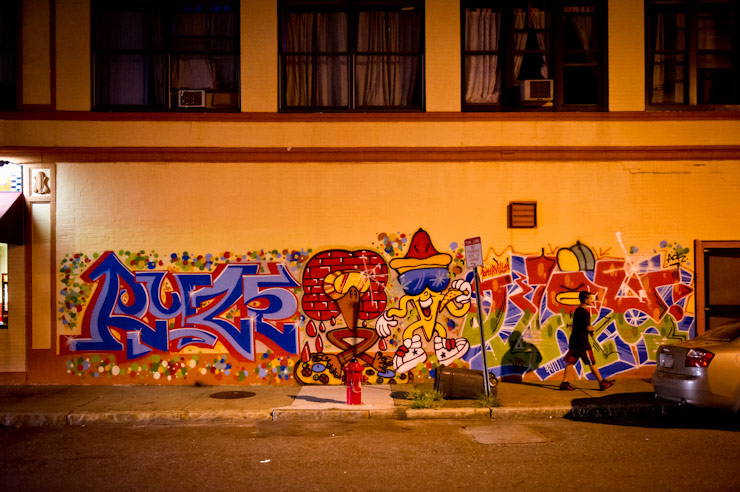
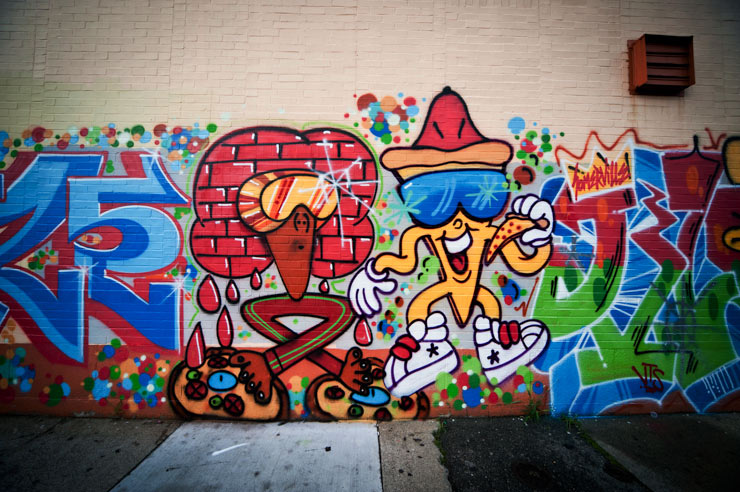
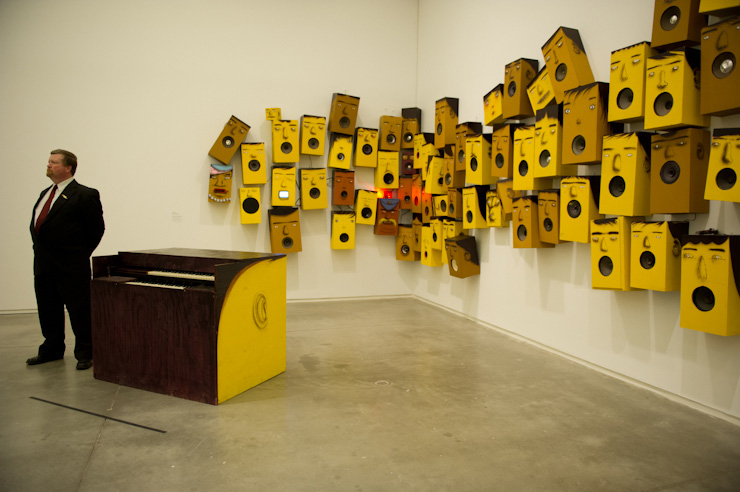
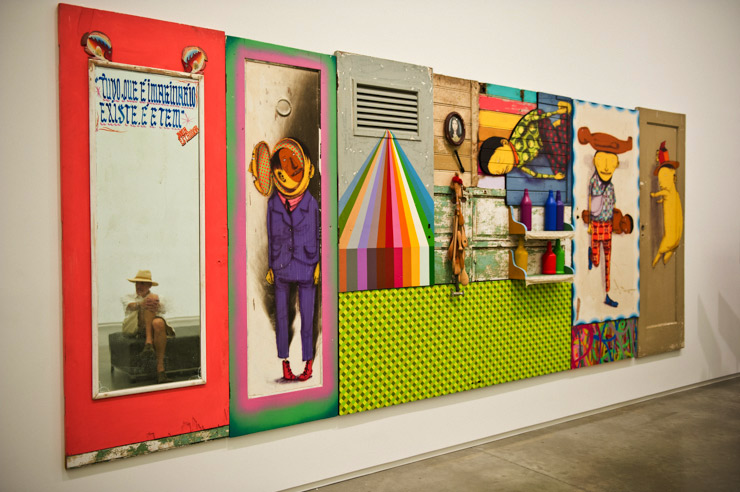
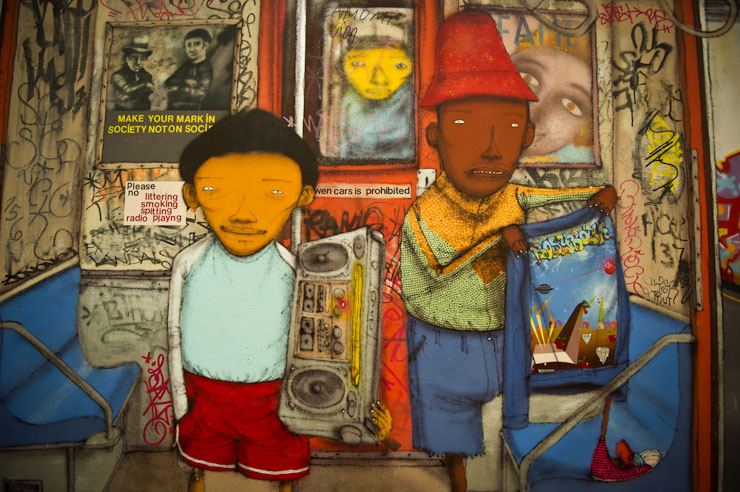
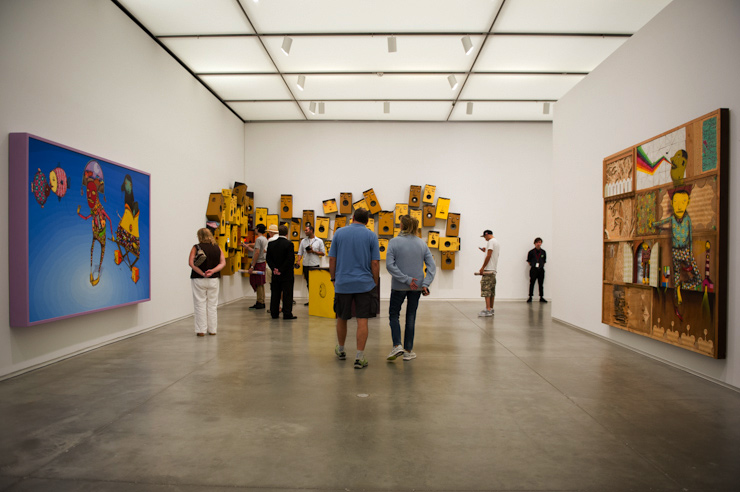
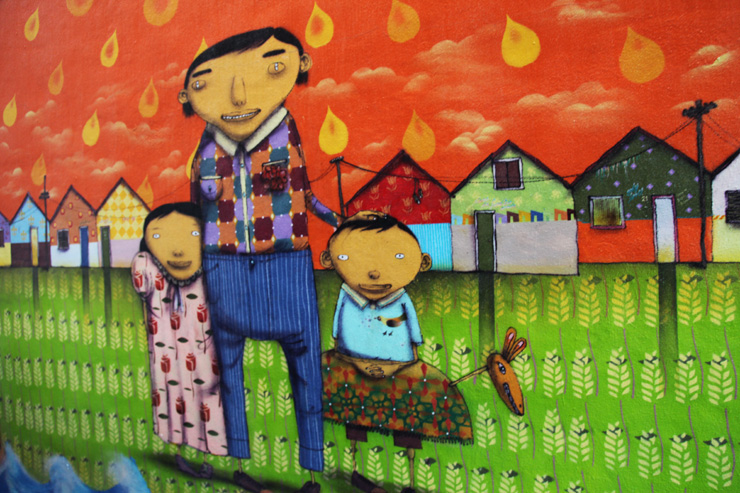
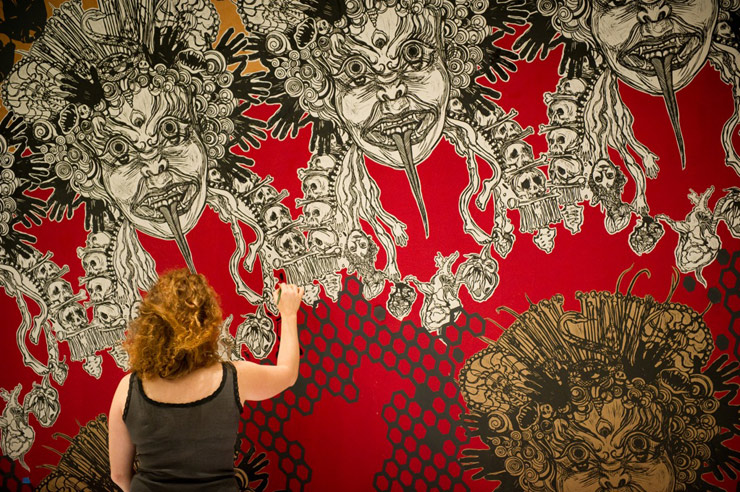
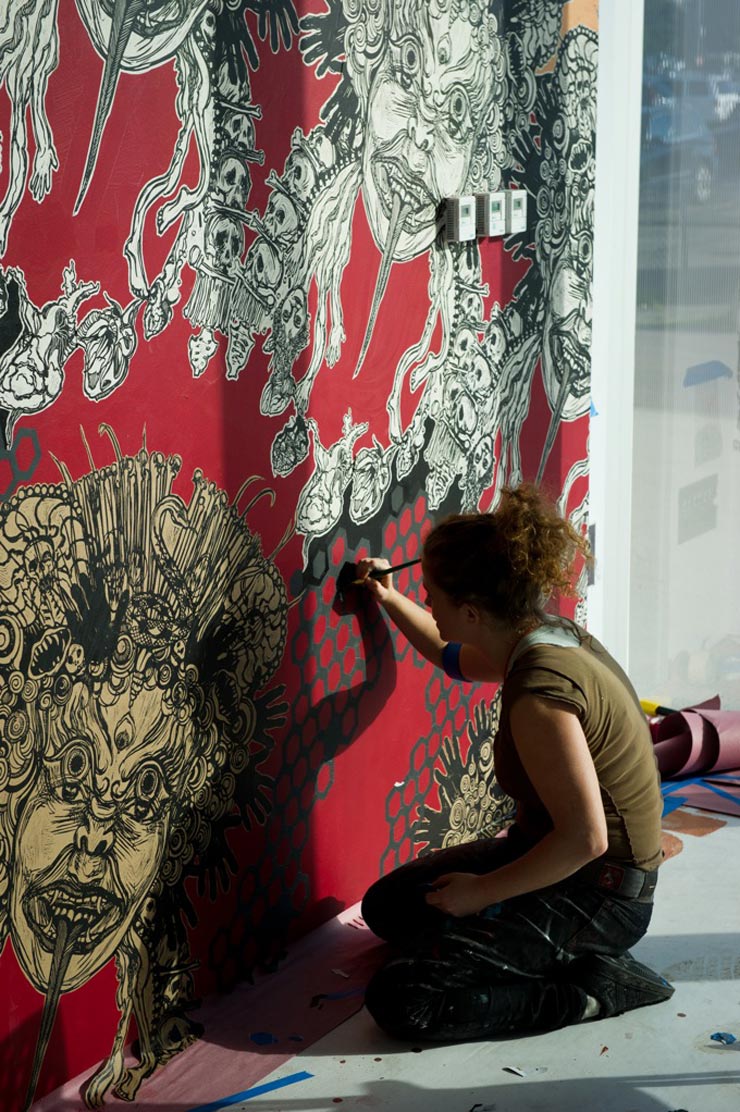
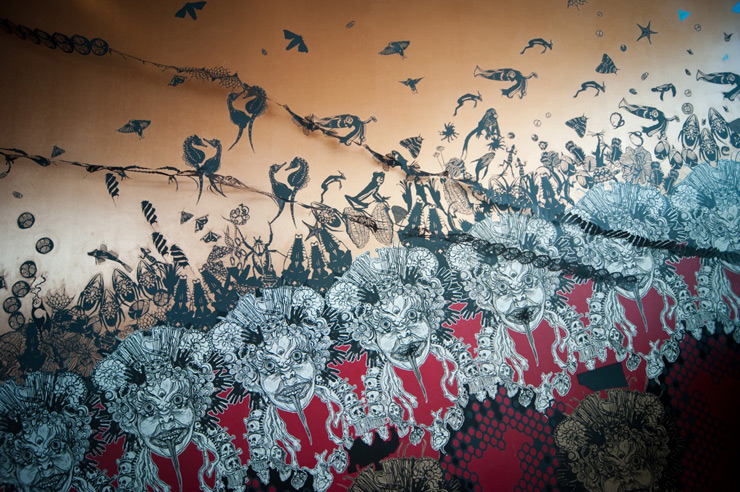
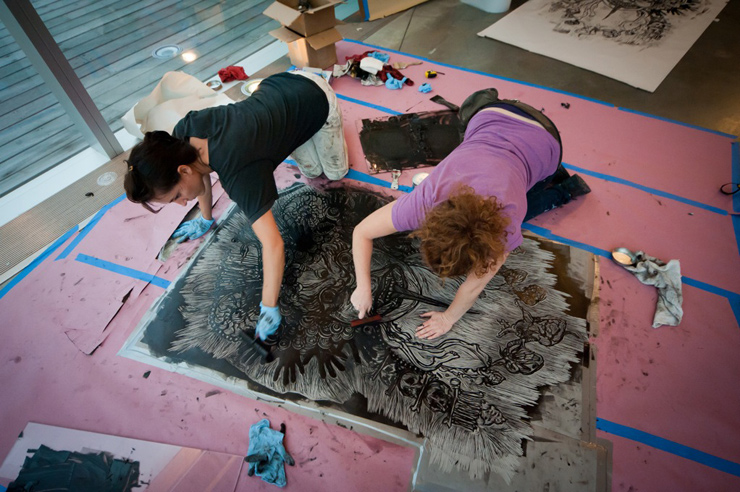
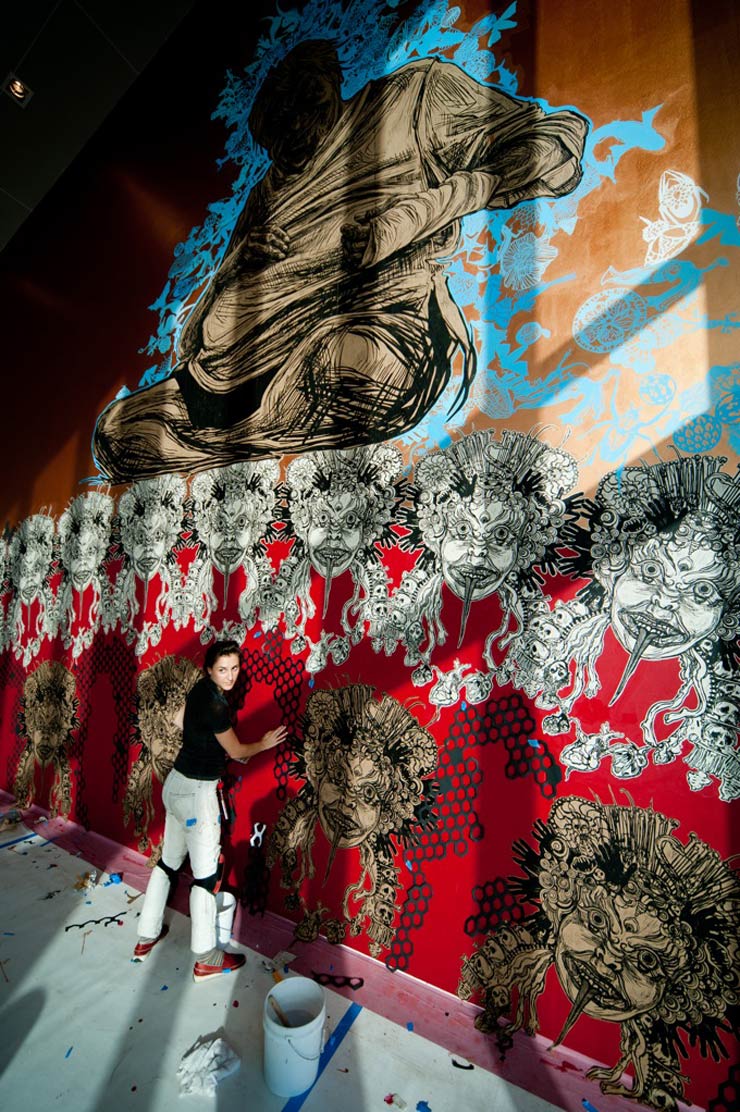
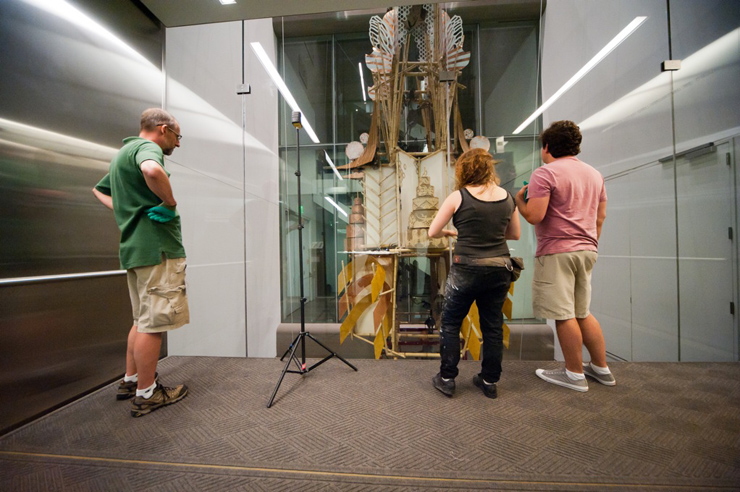
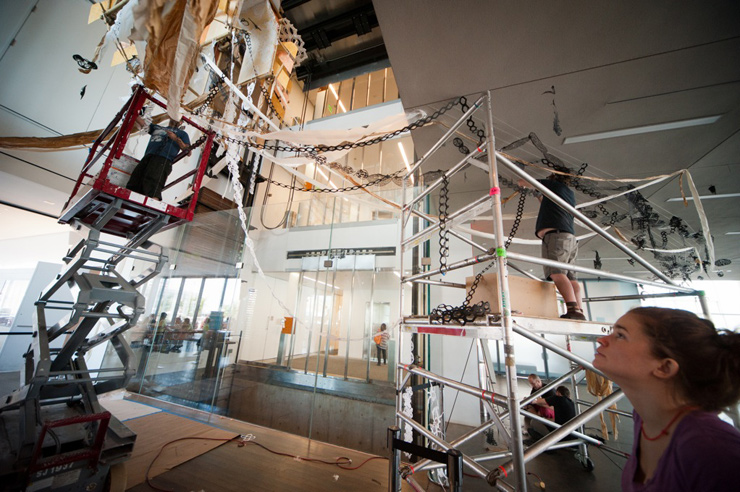
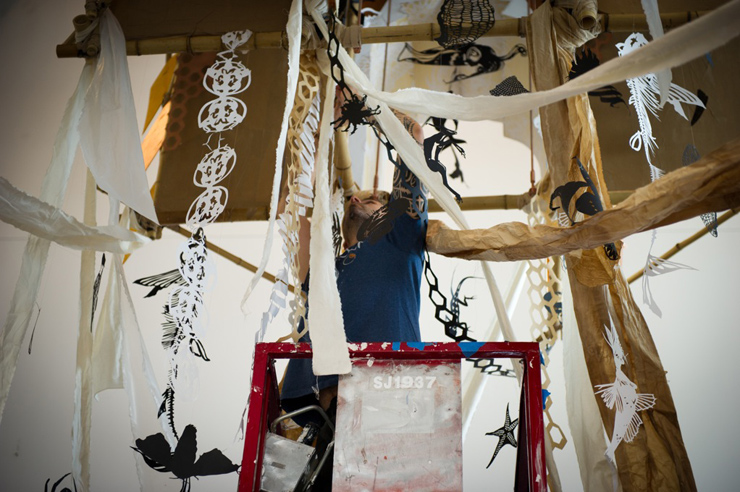
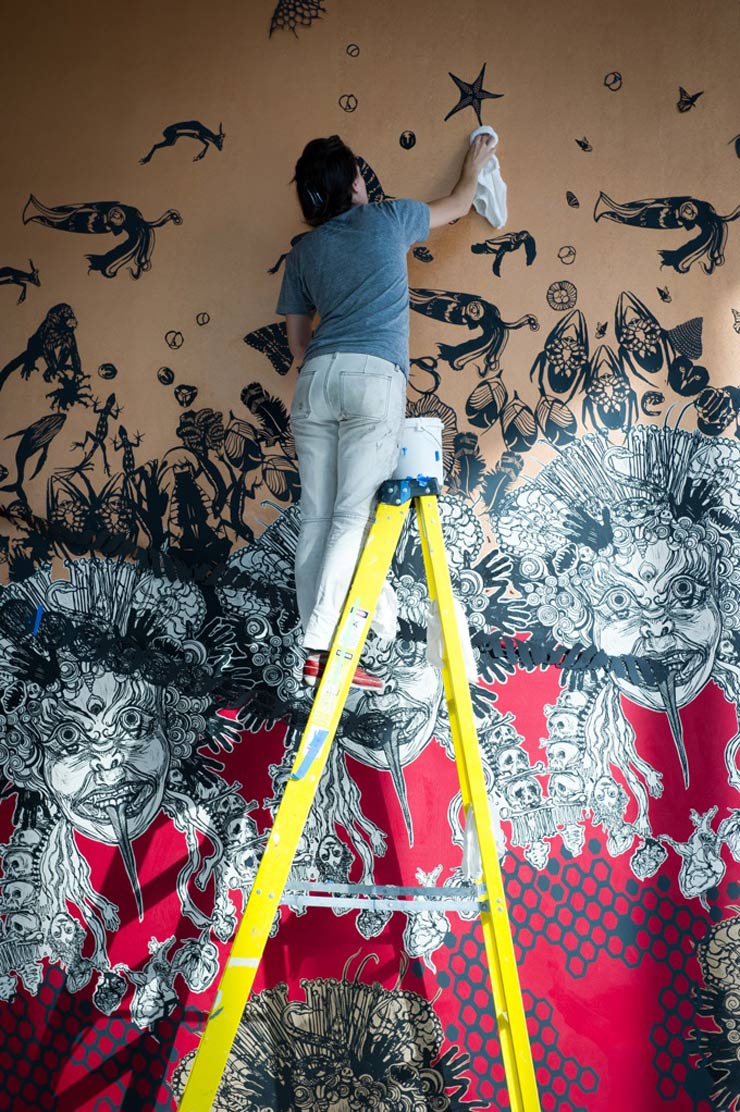









 Crotched objects began appearing on the street this year. © Jaime Rojo
Crotched objects began appearing on the street this year. © Jaime Rojo








